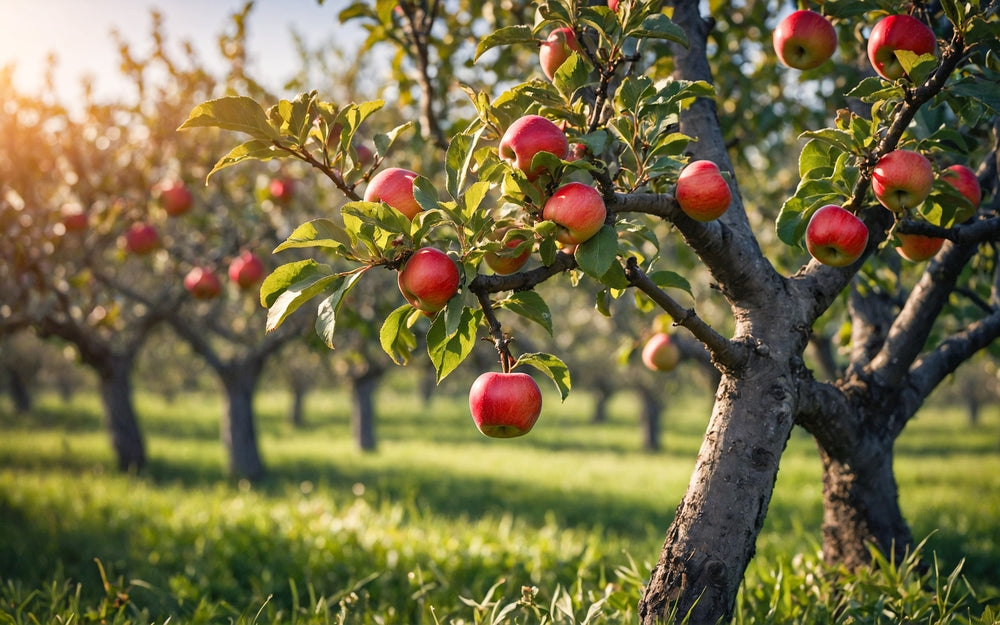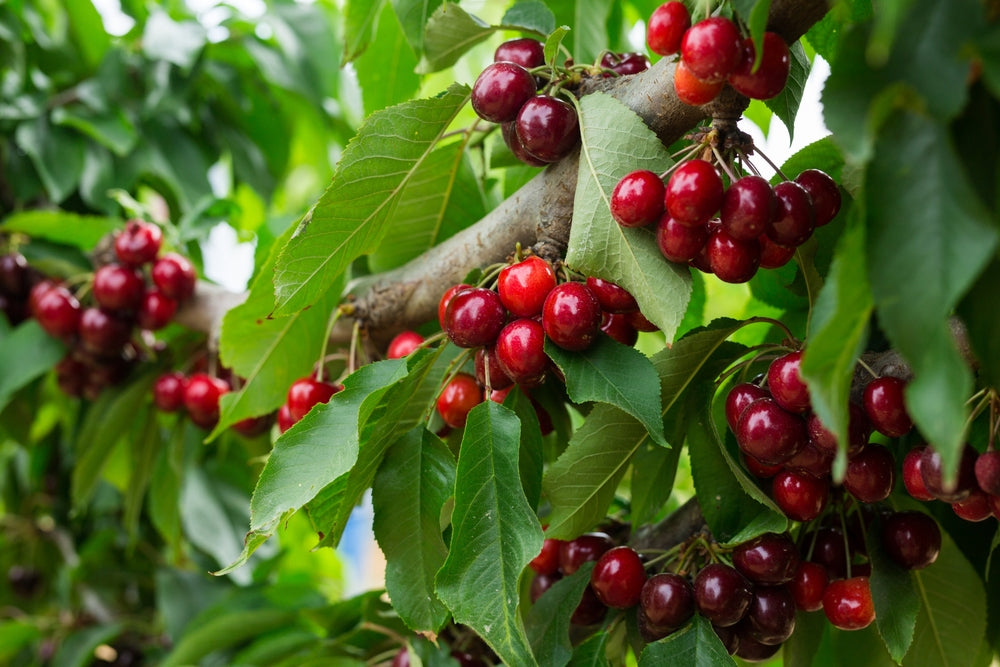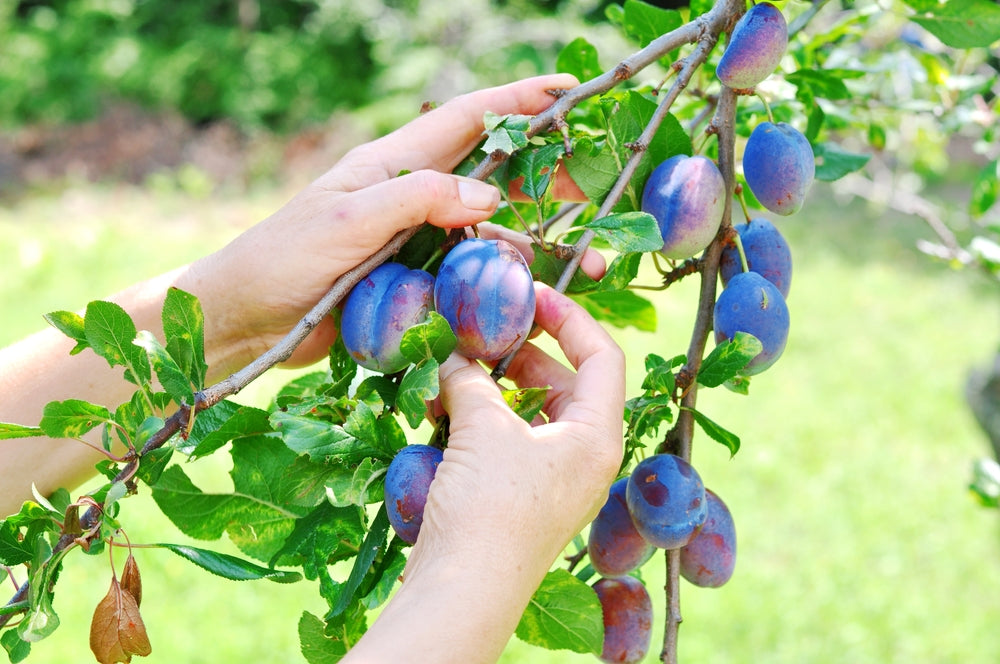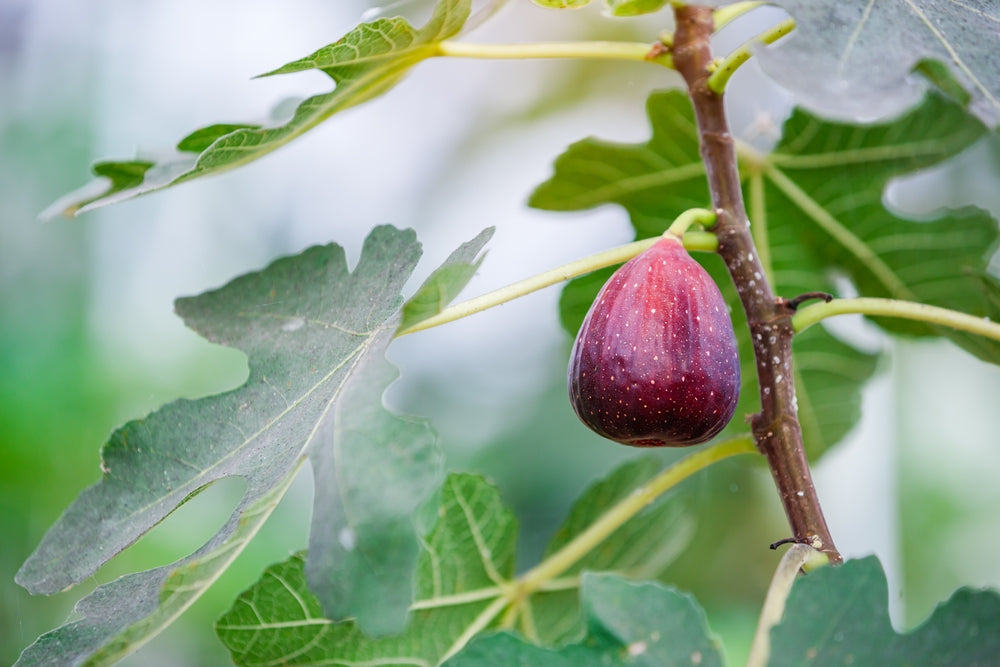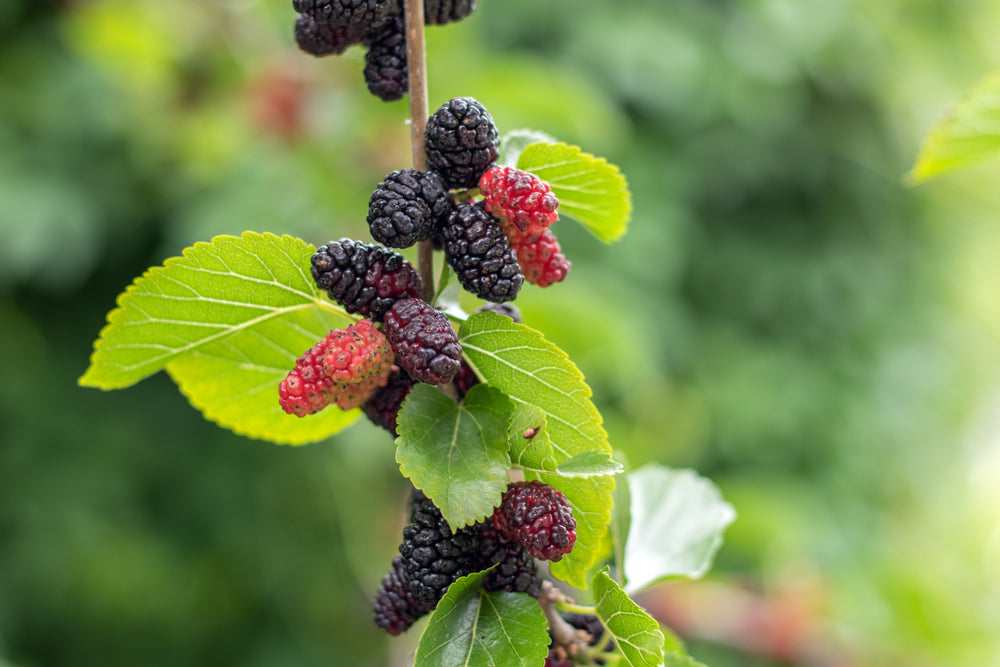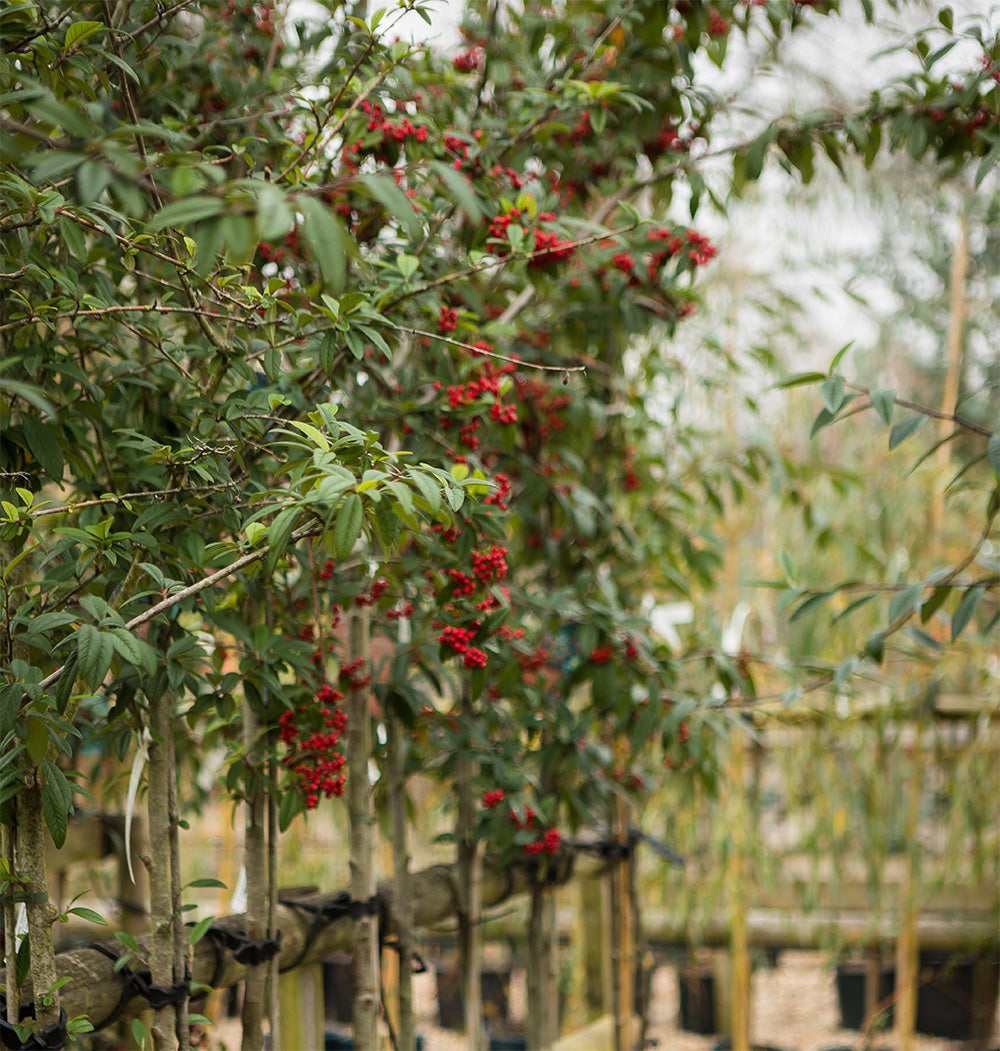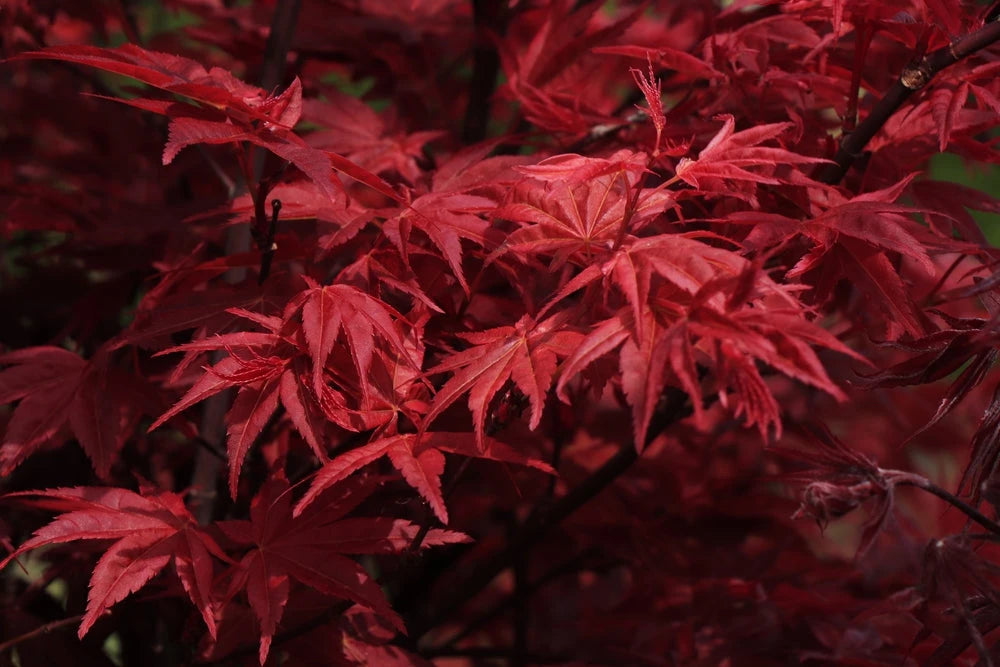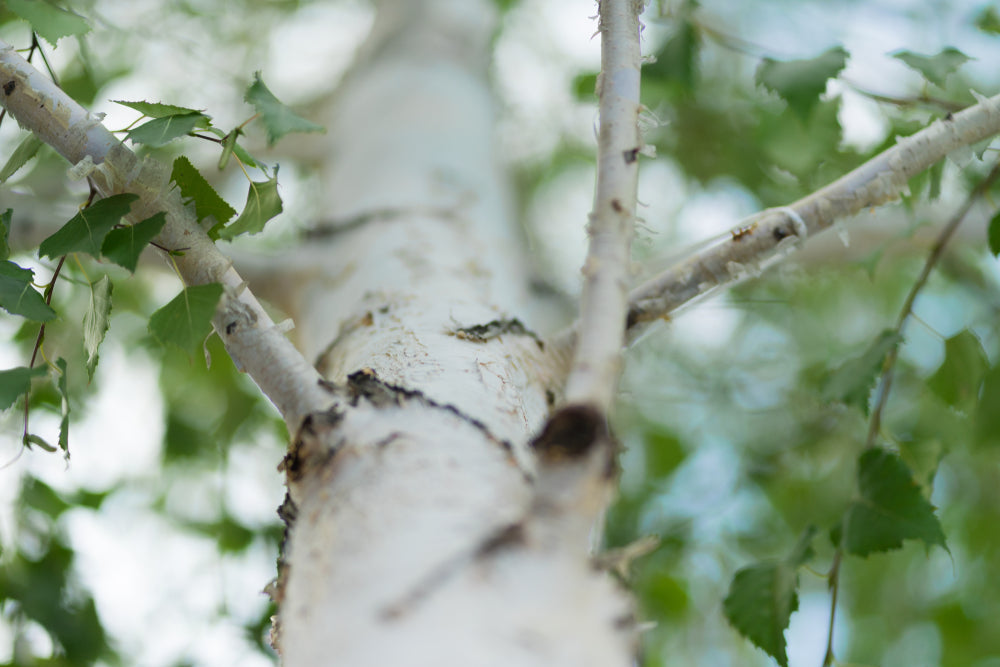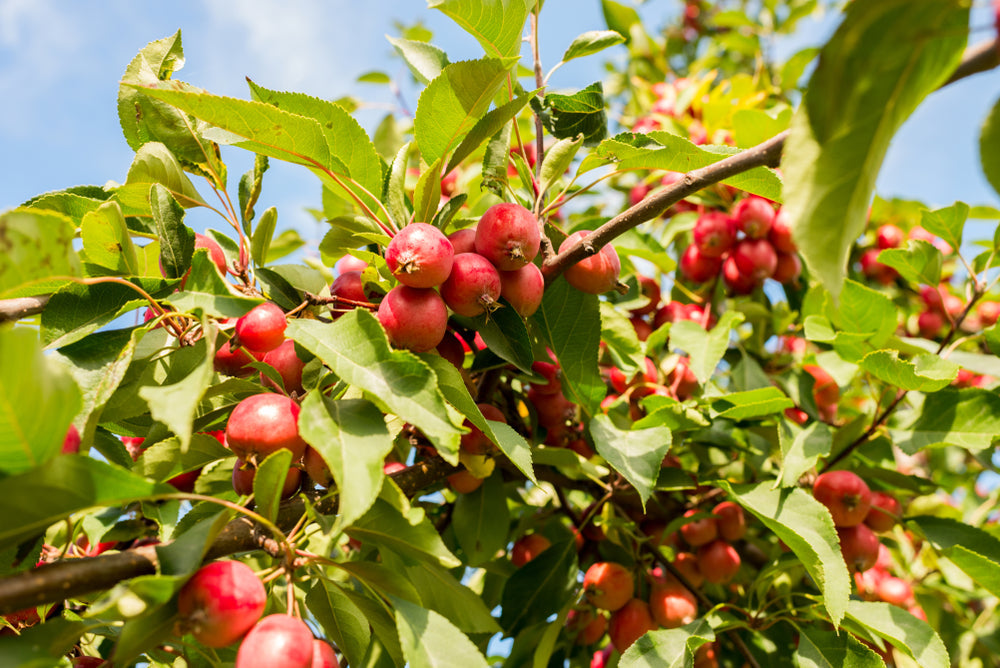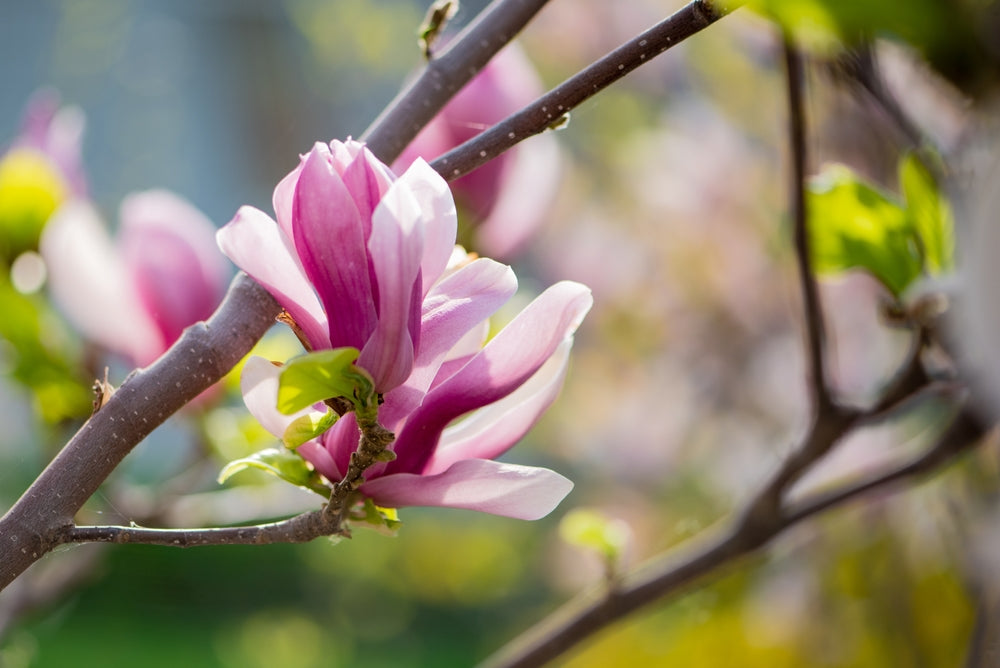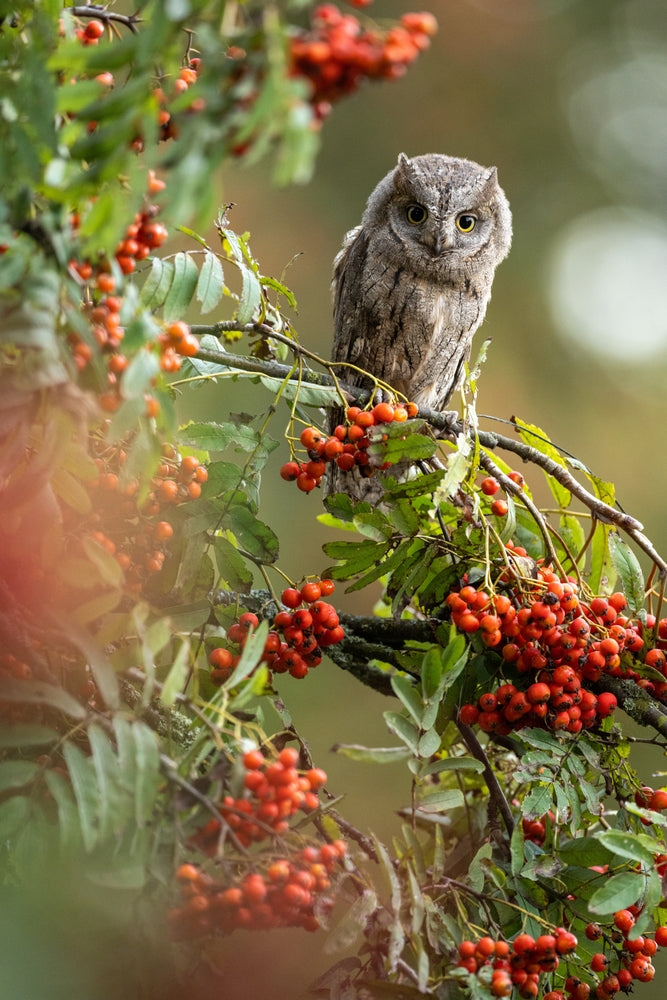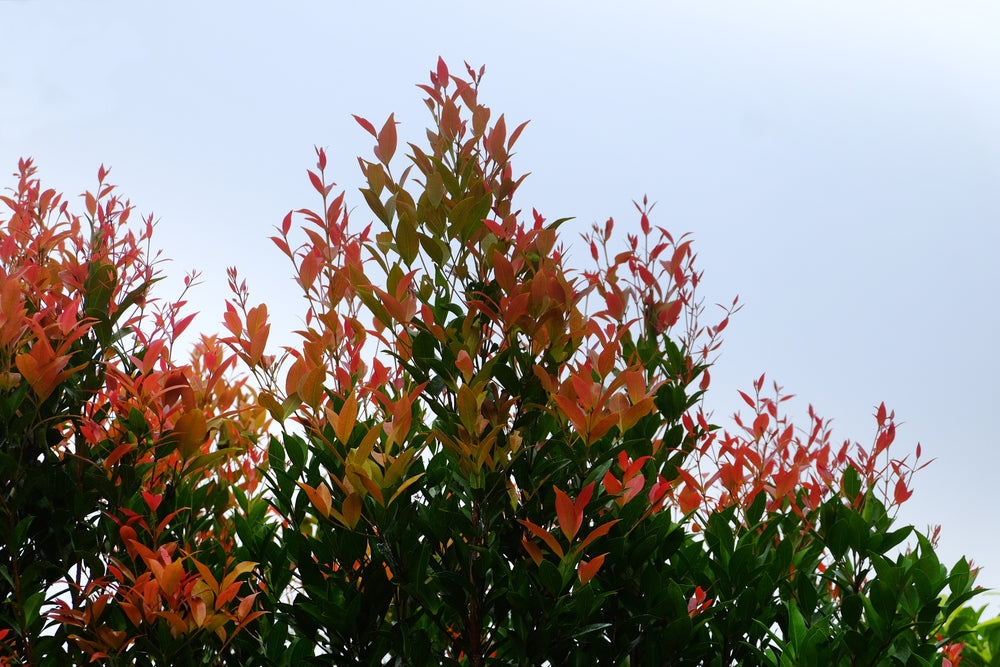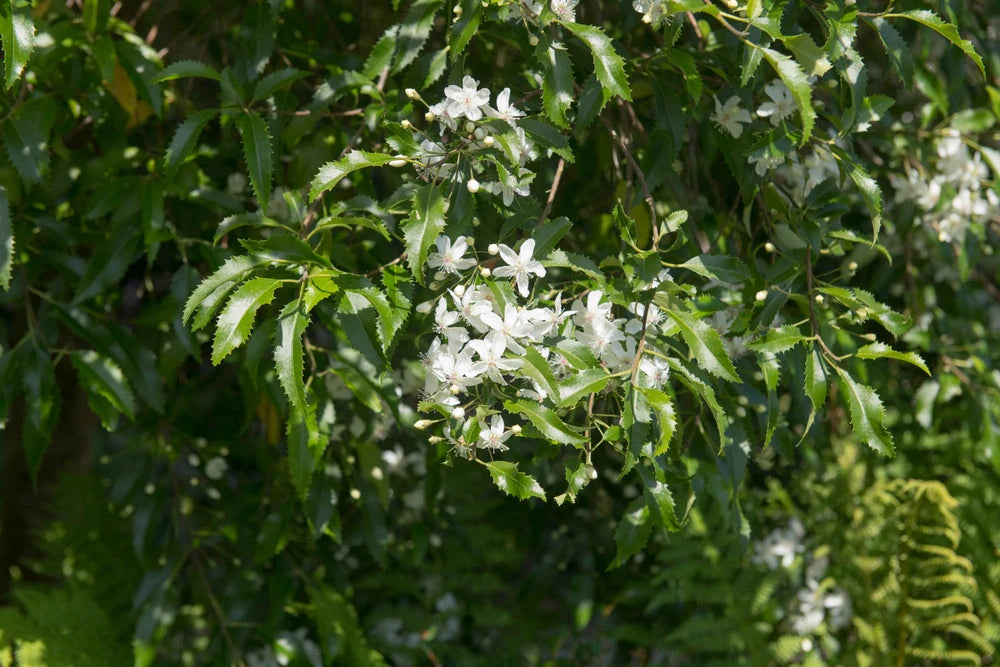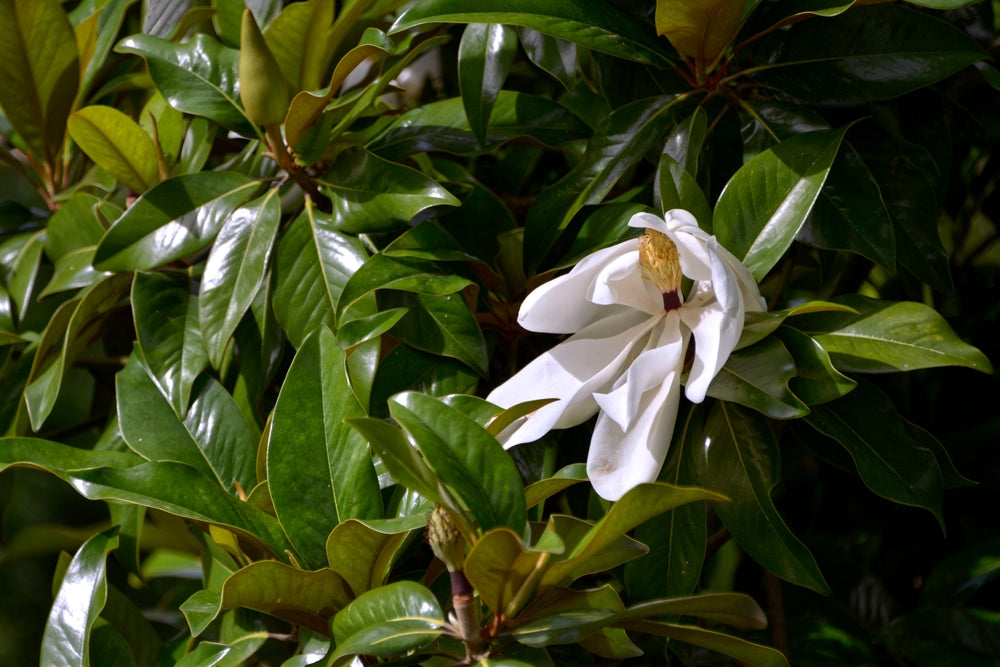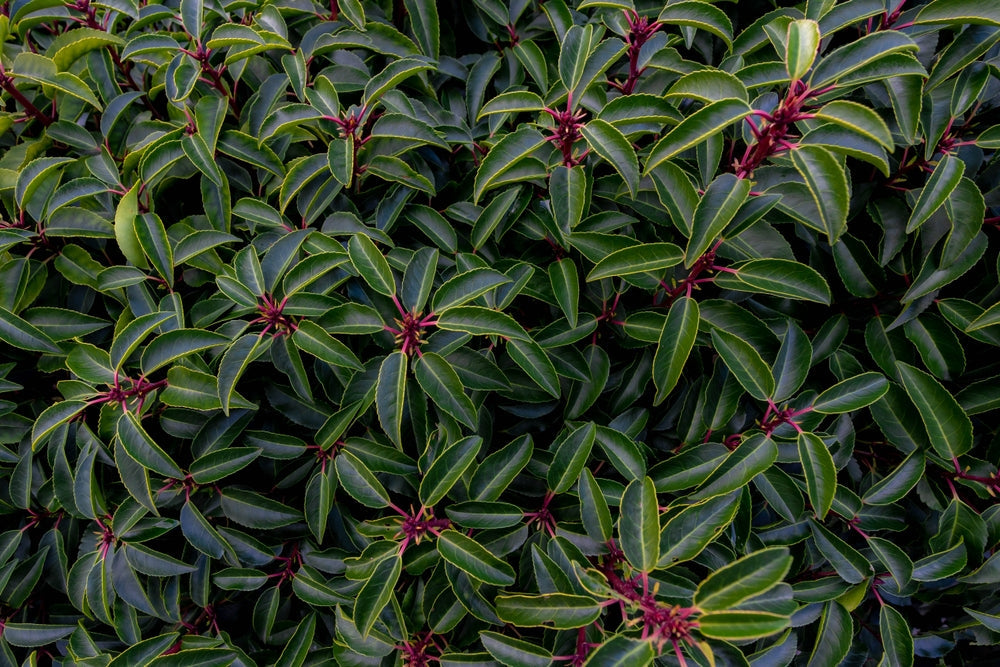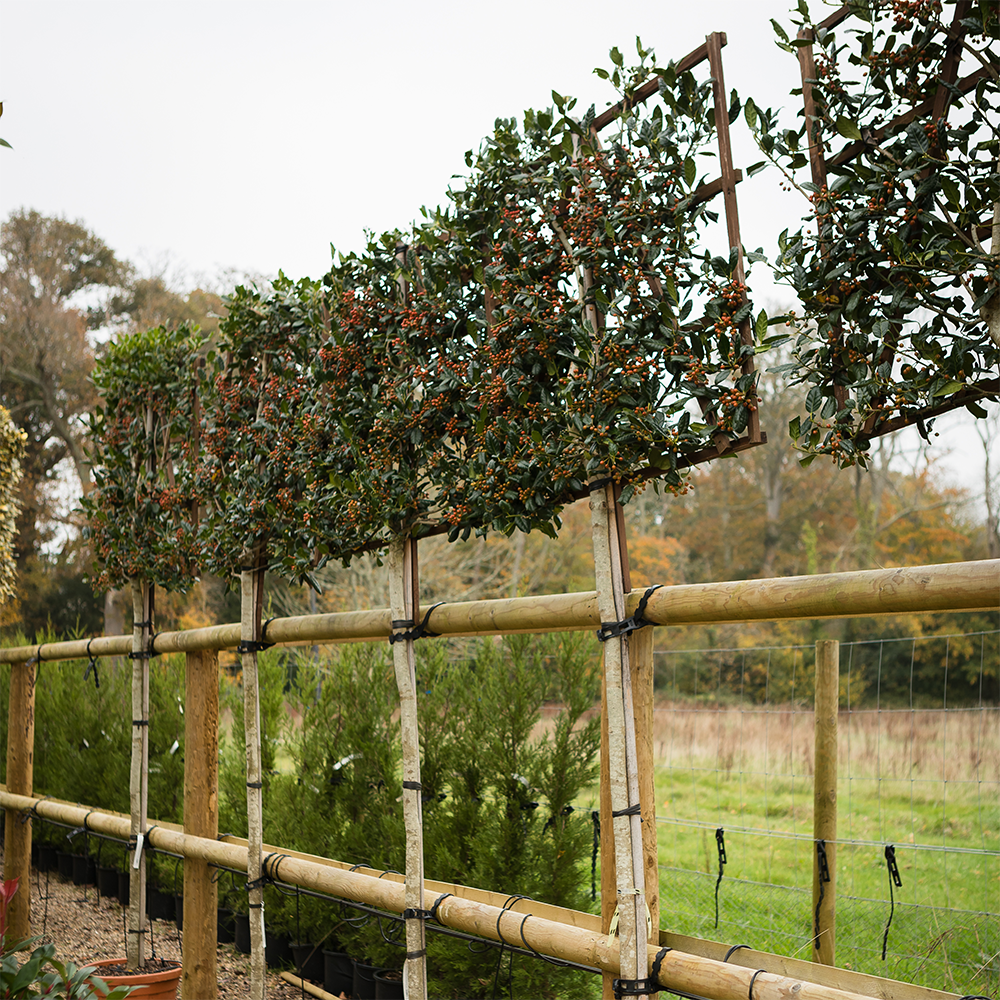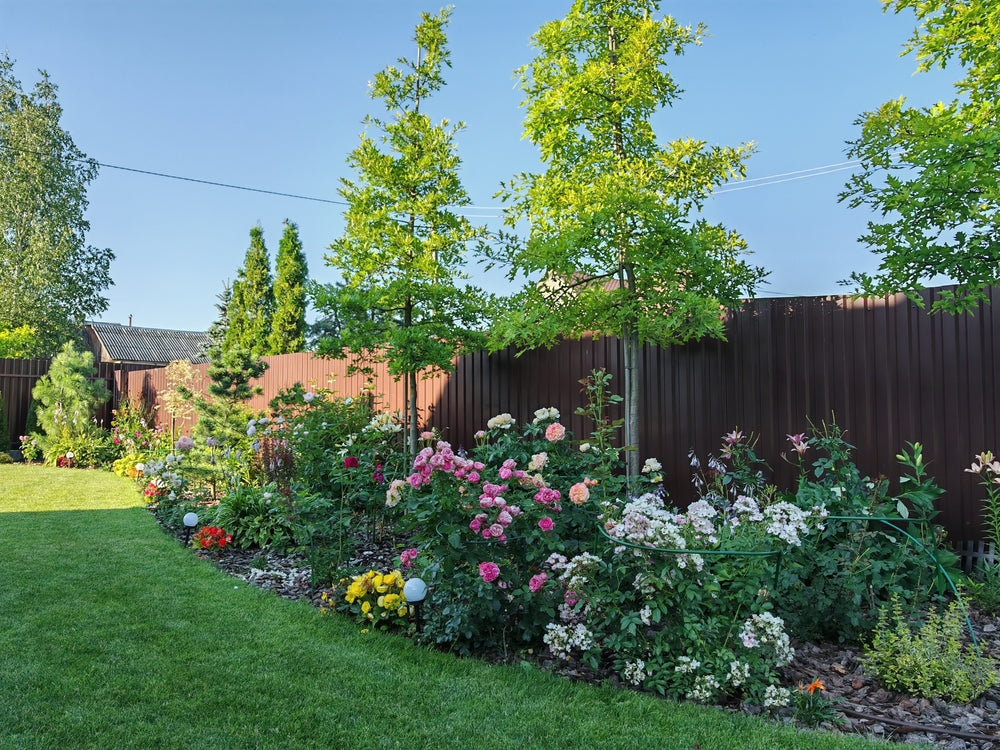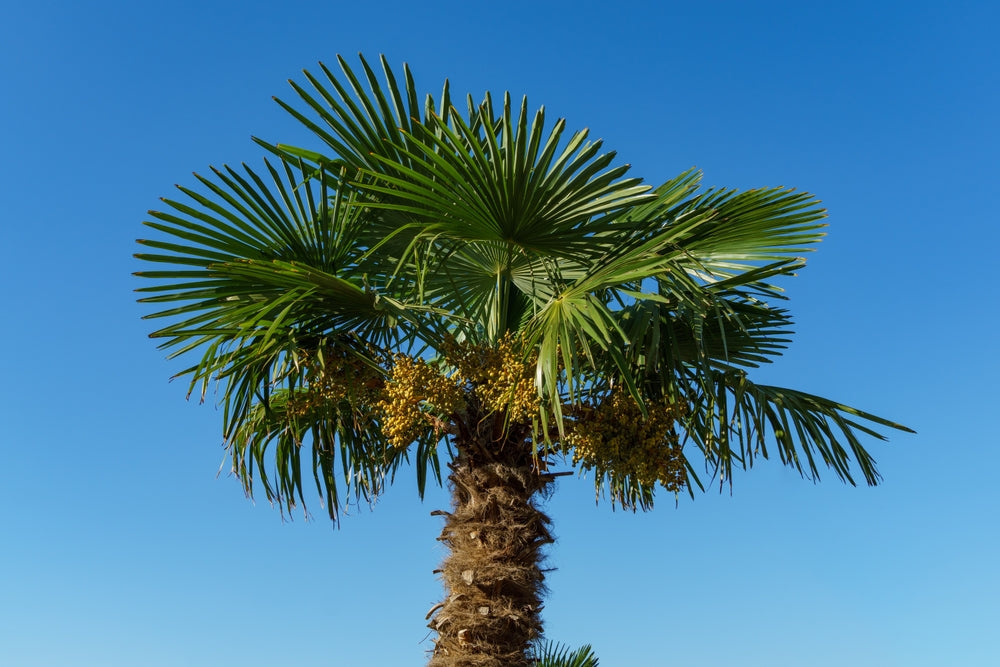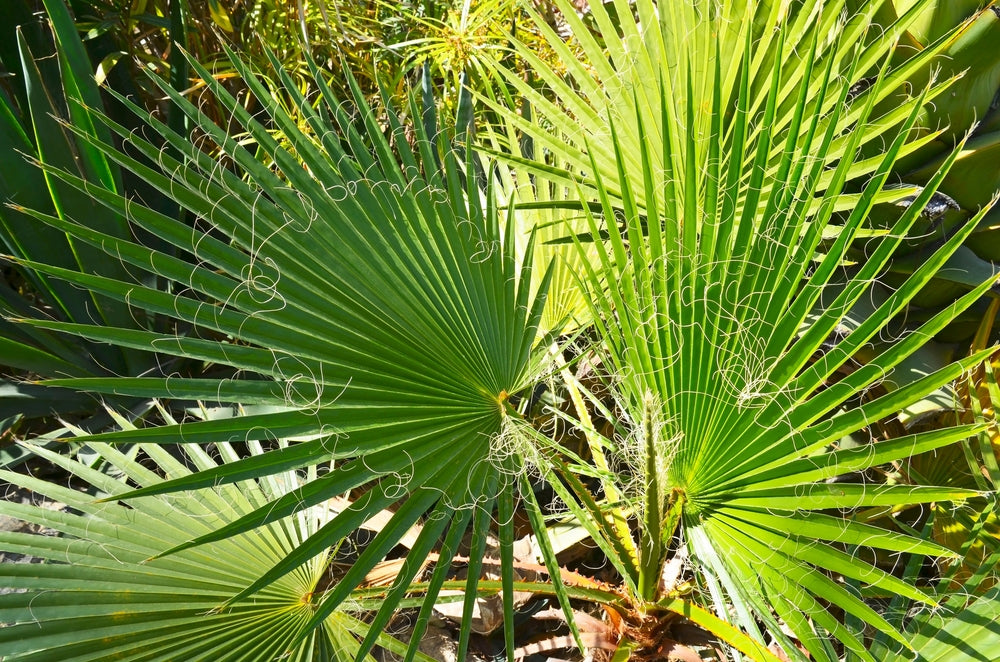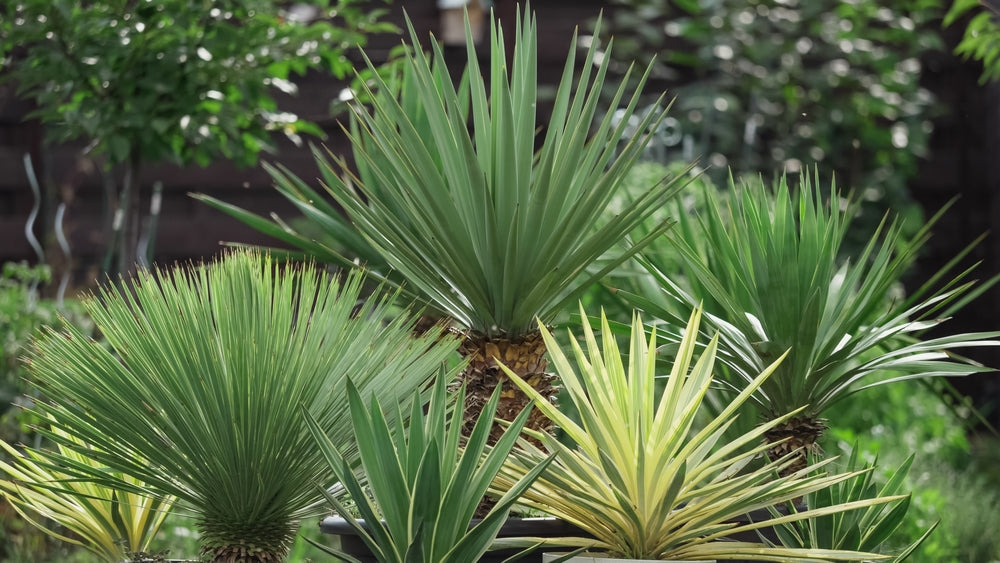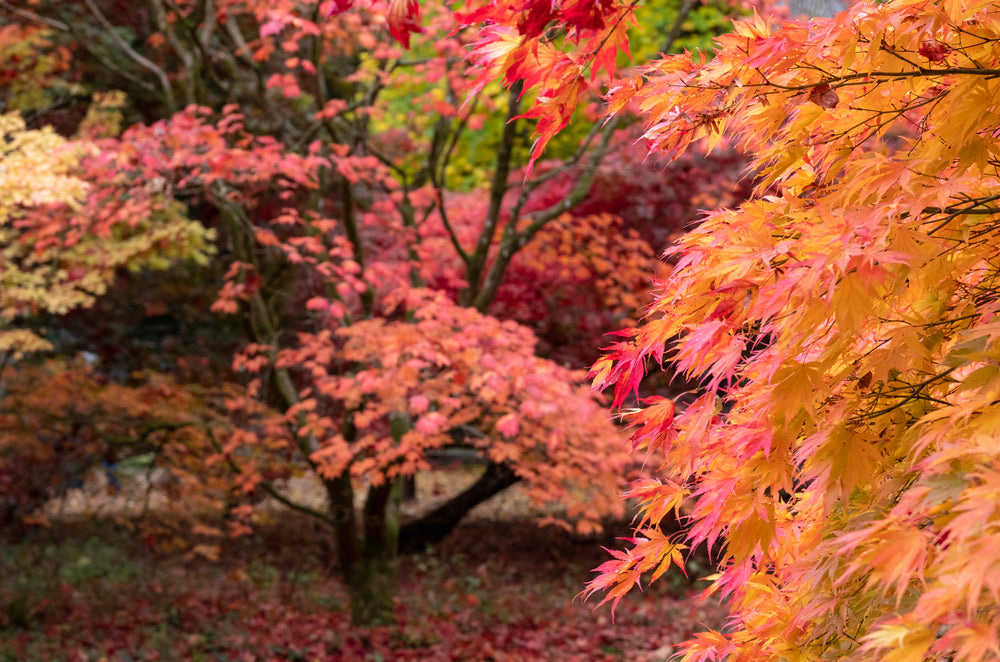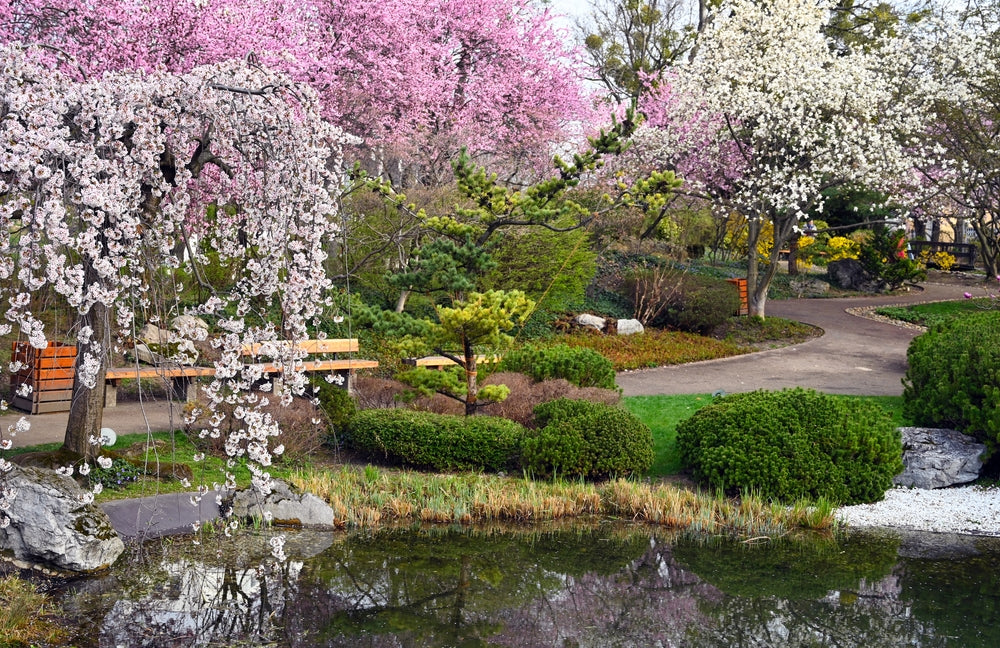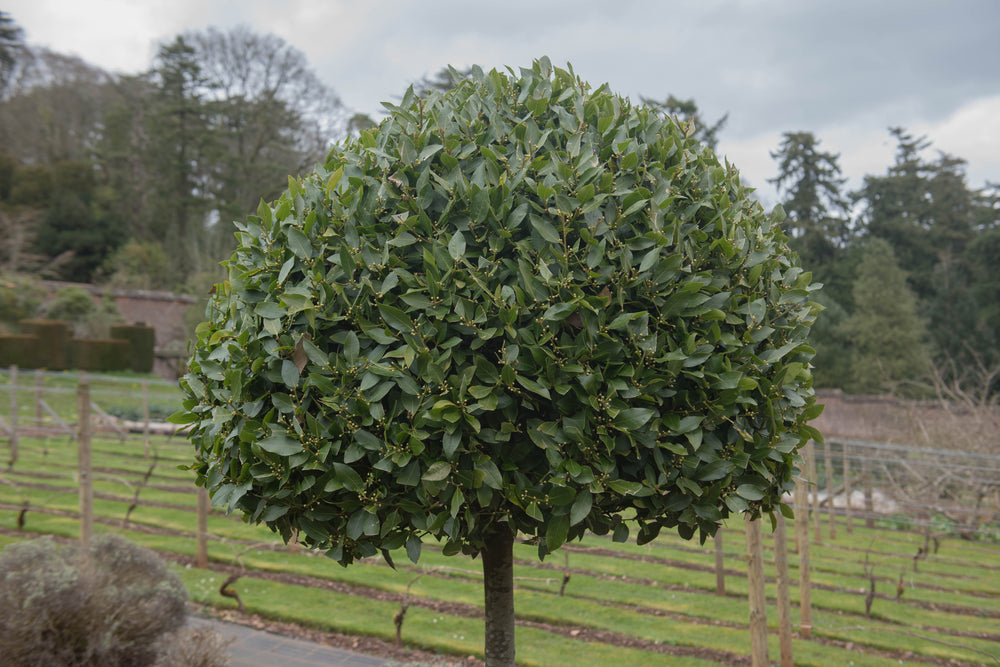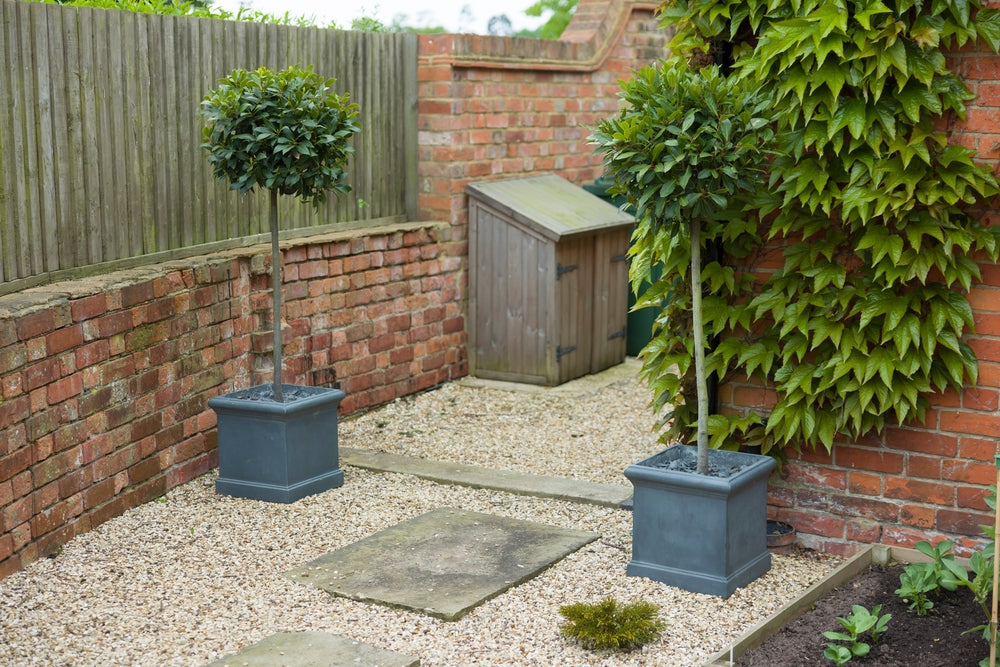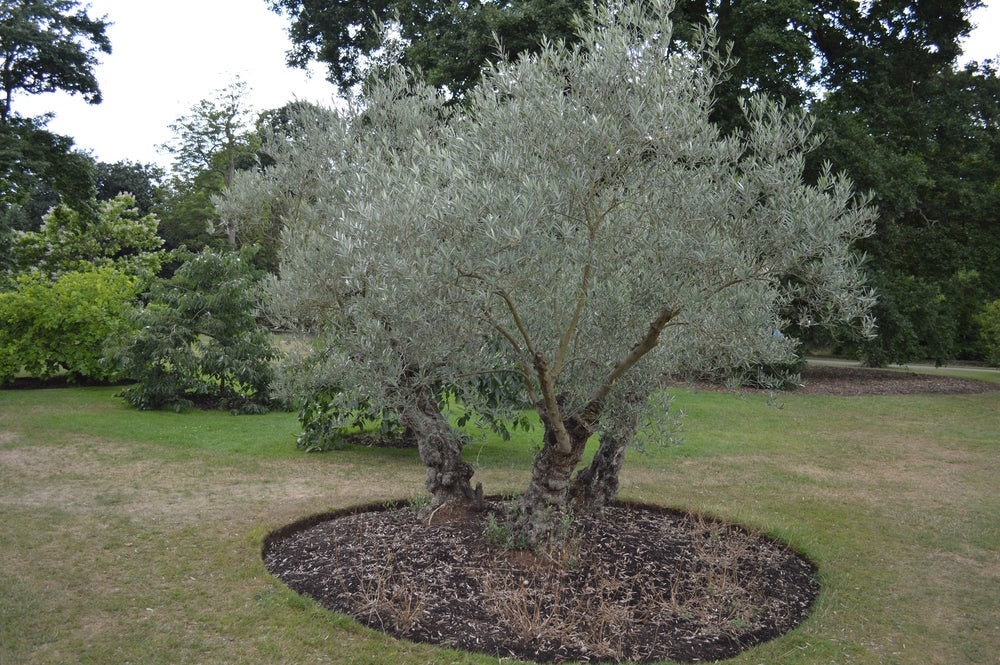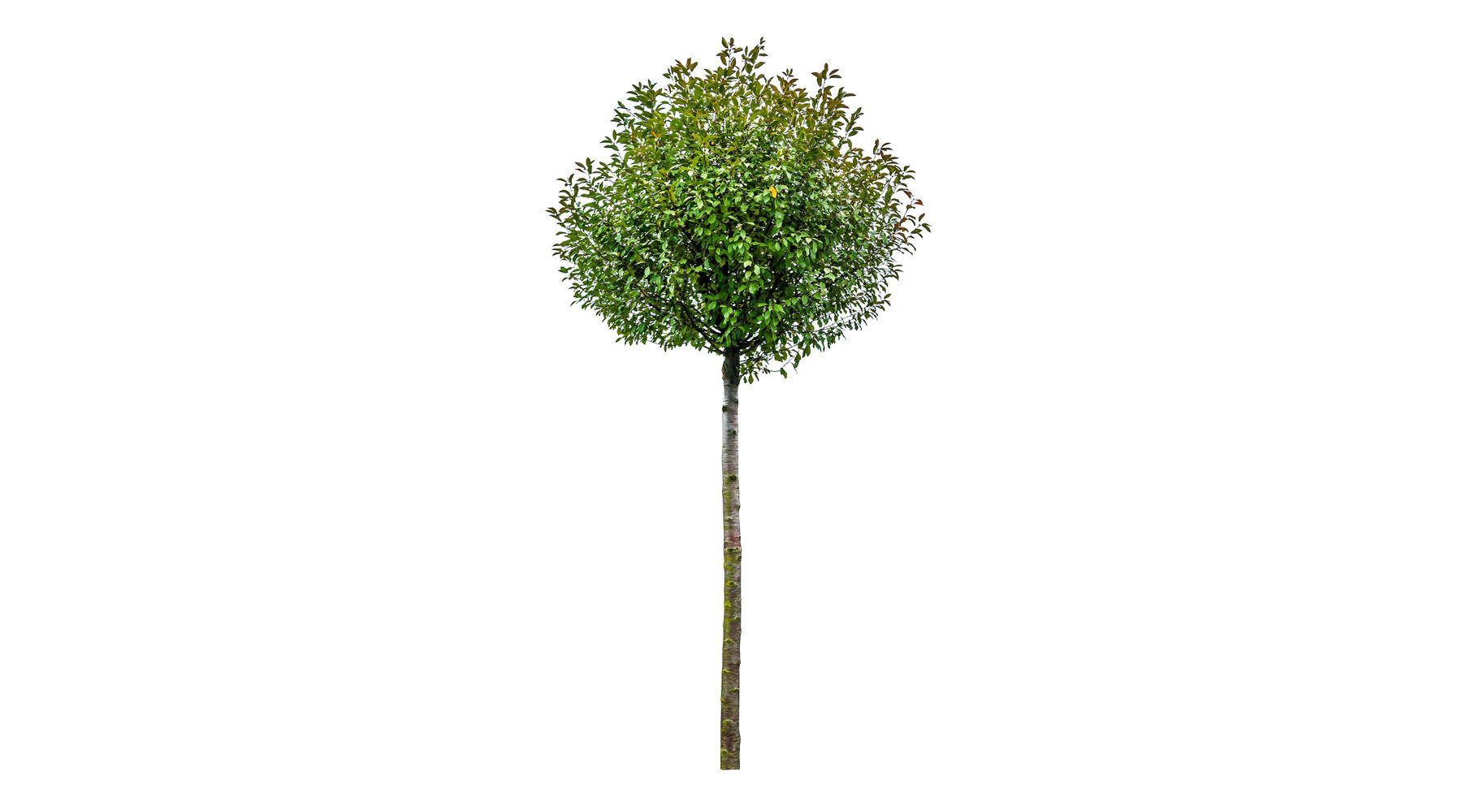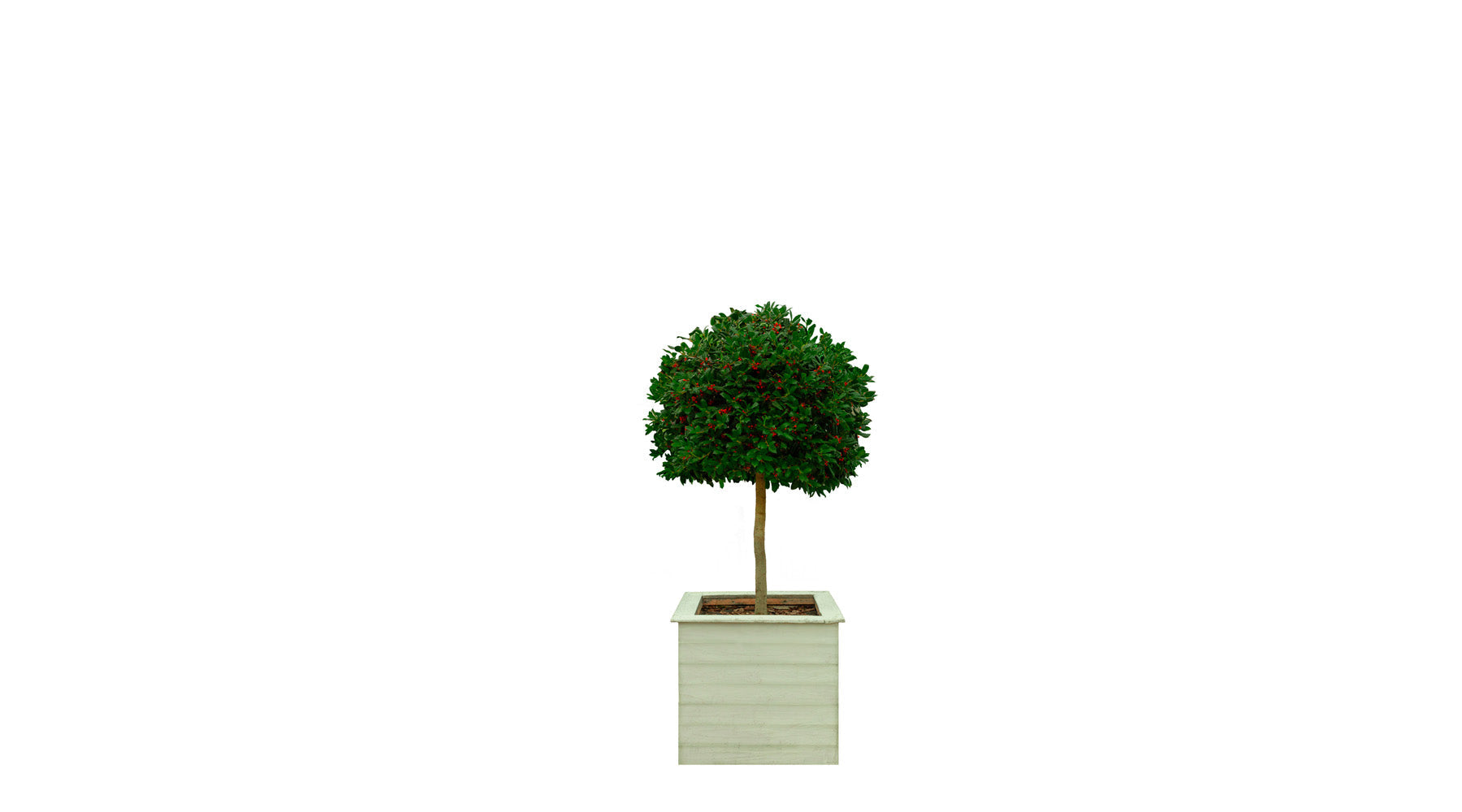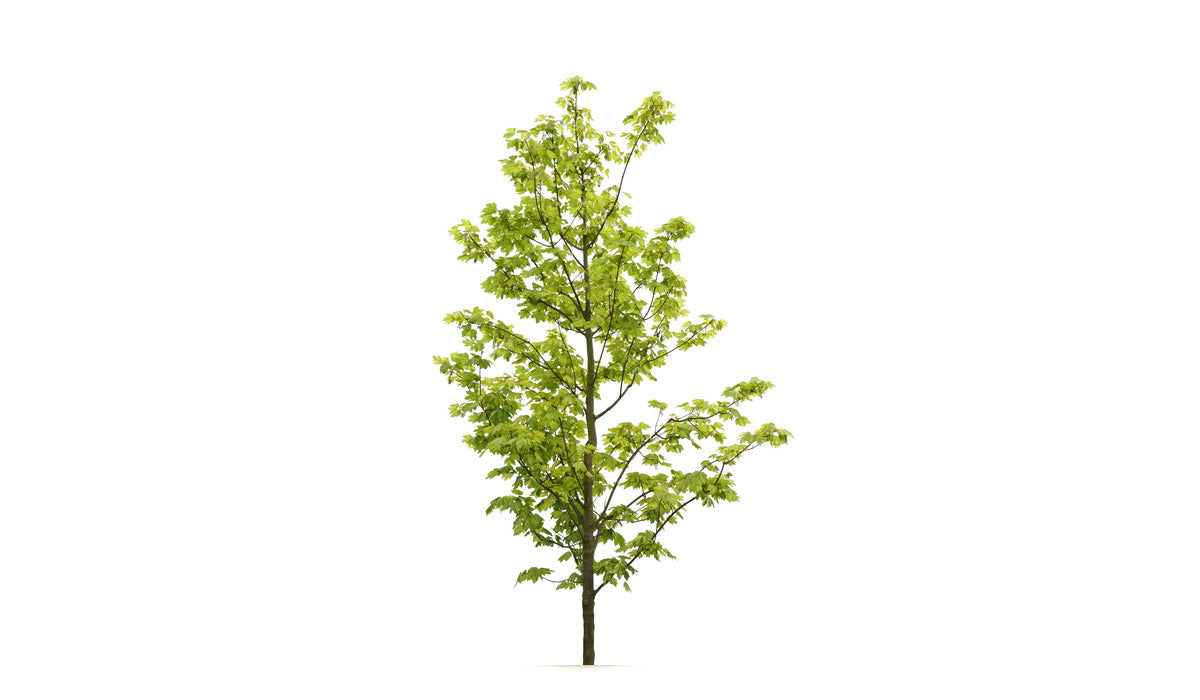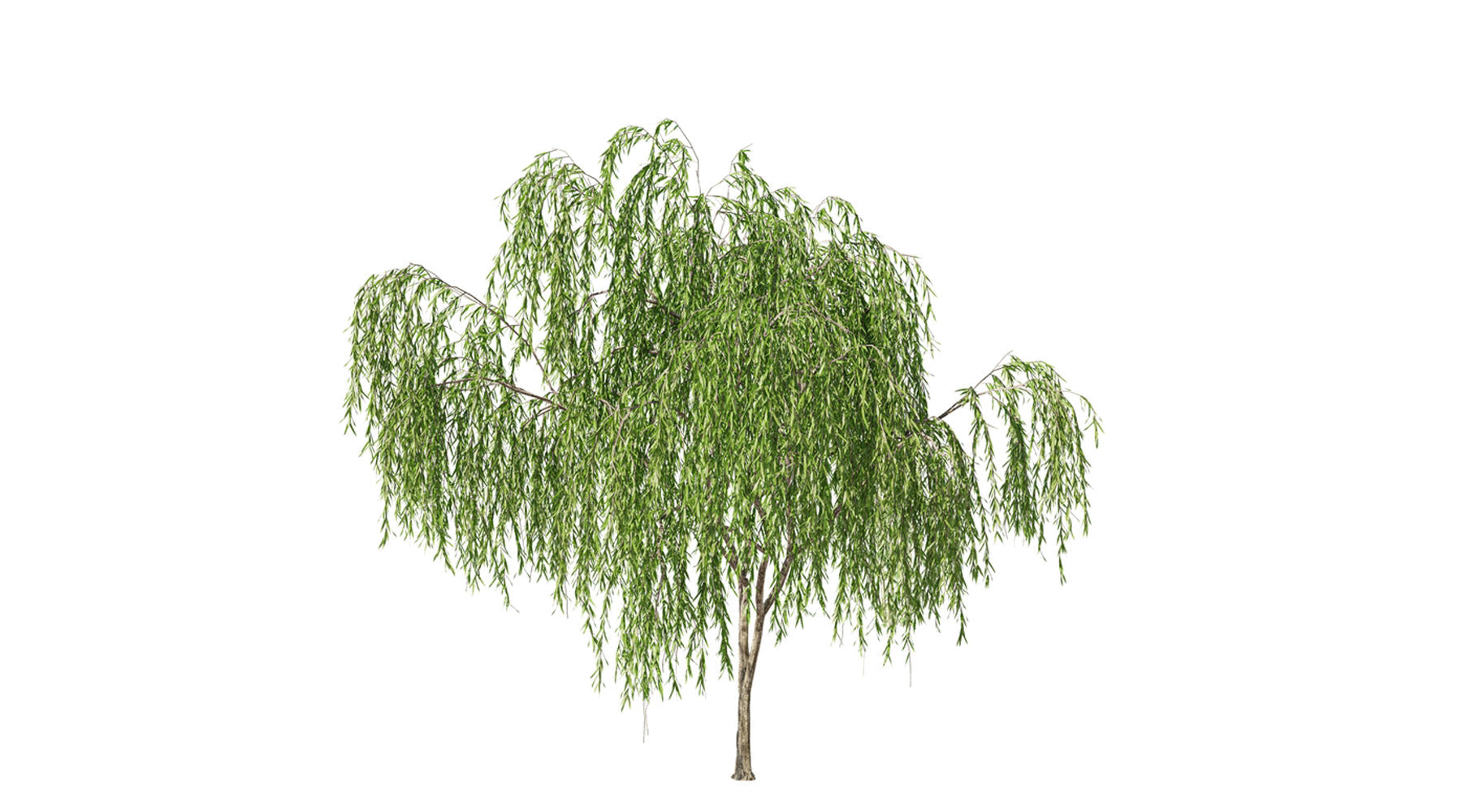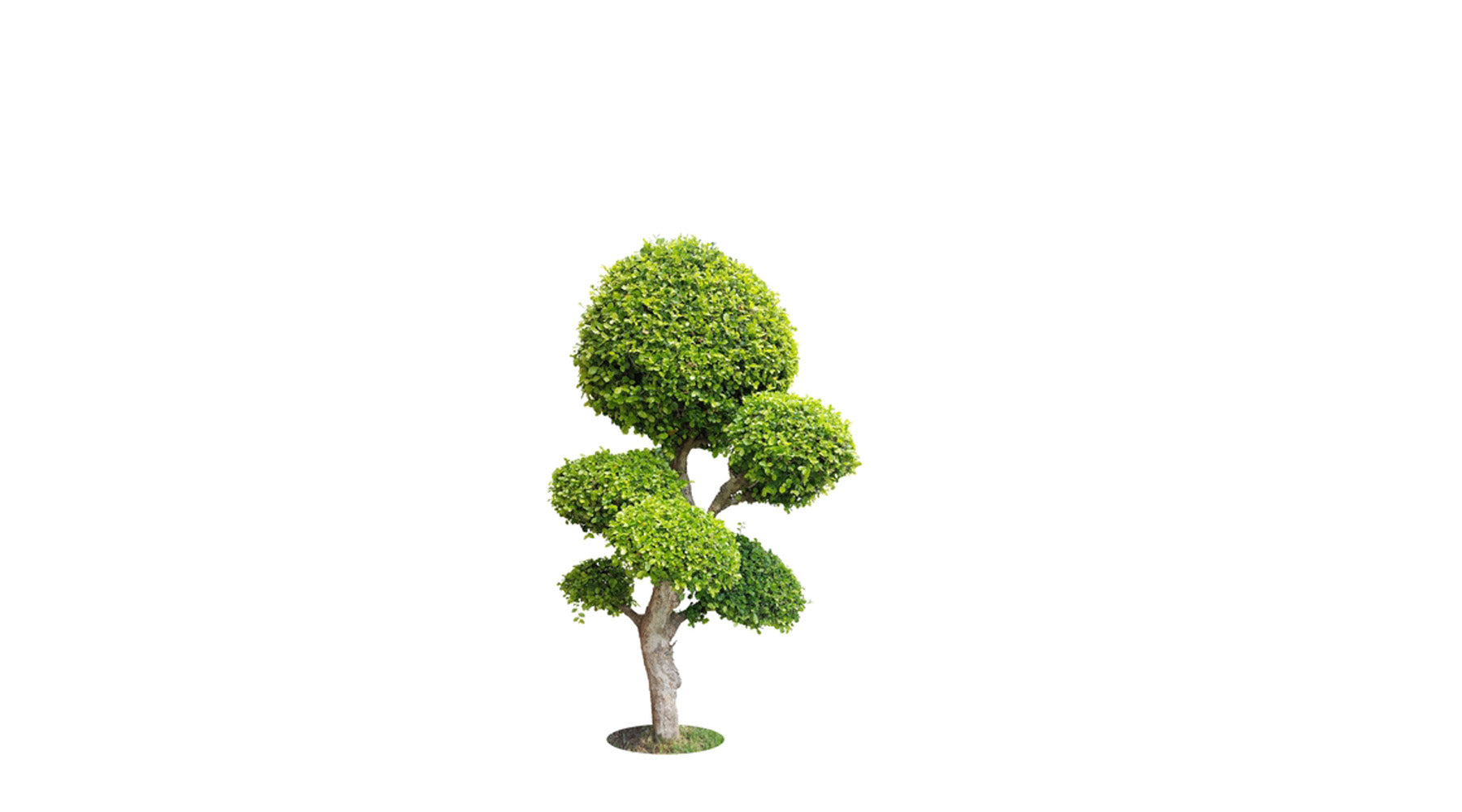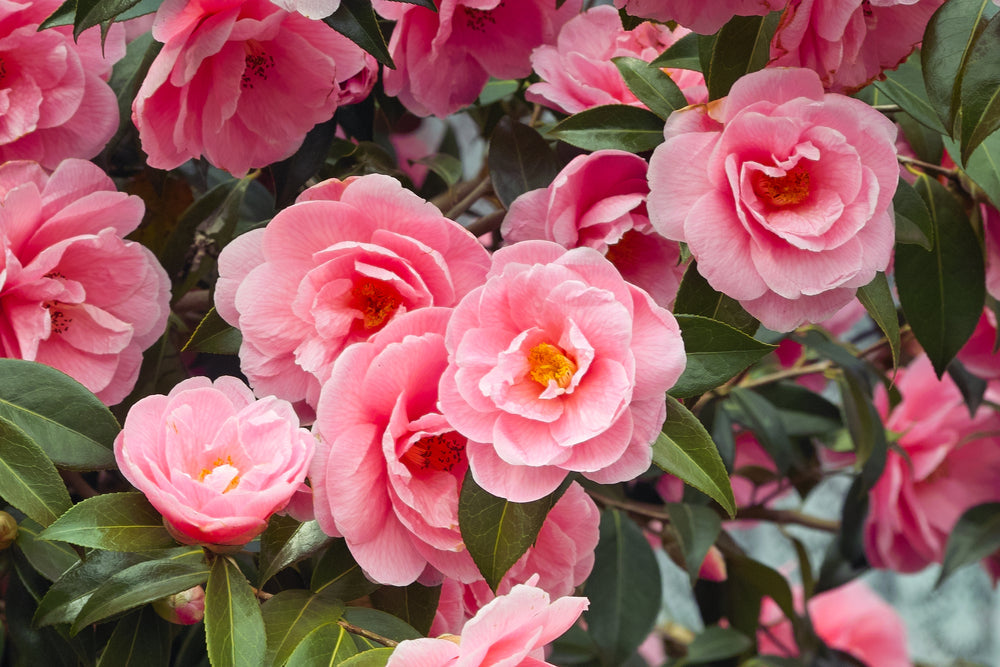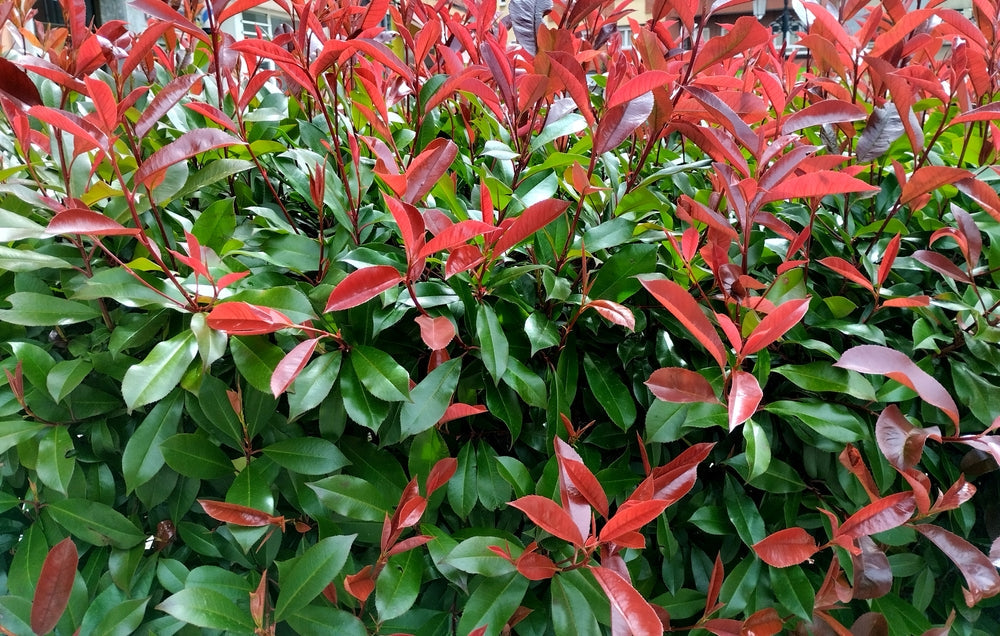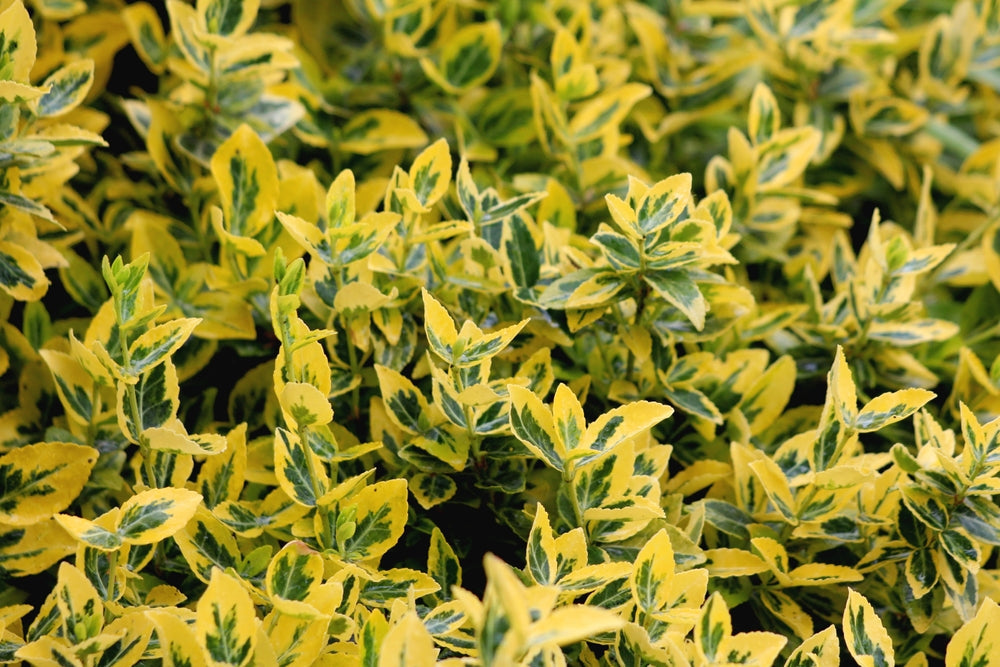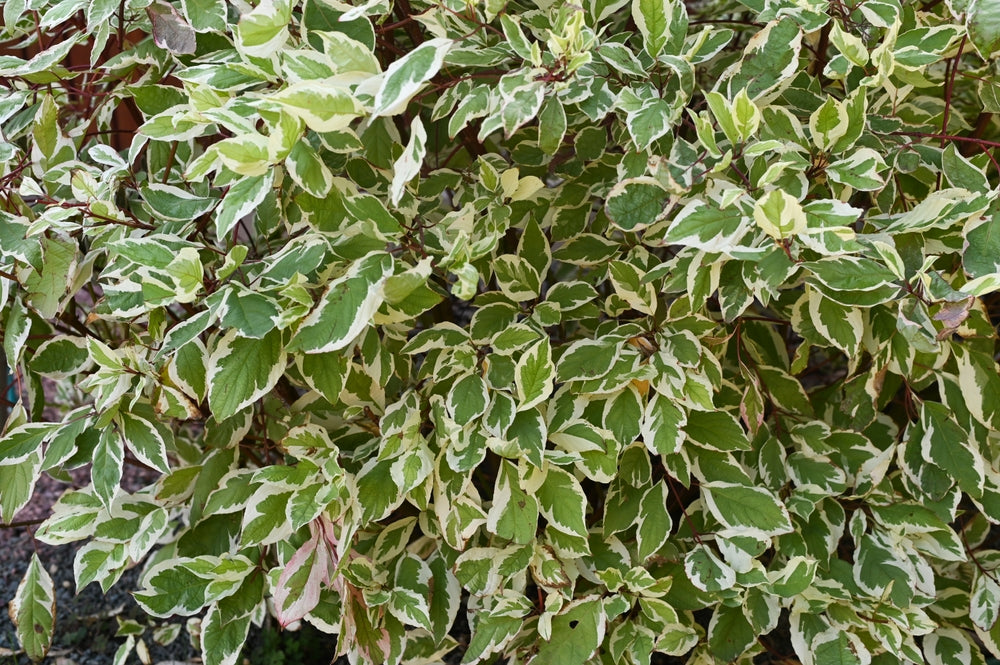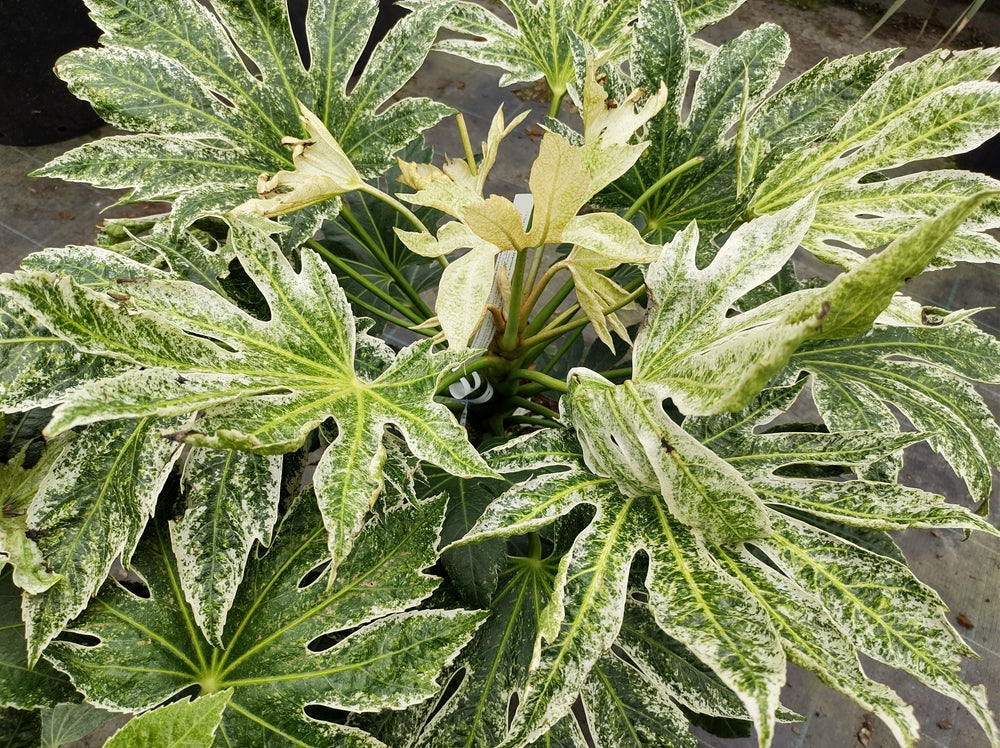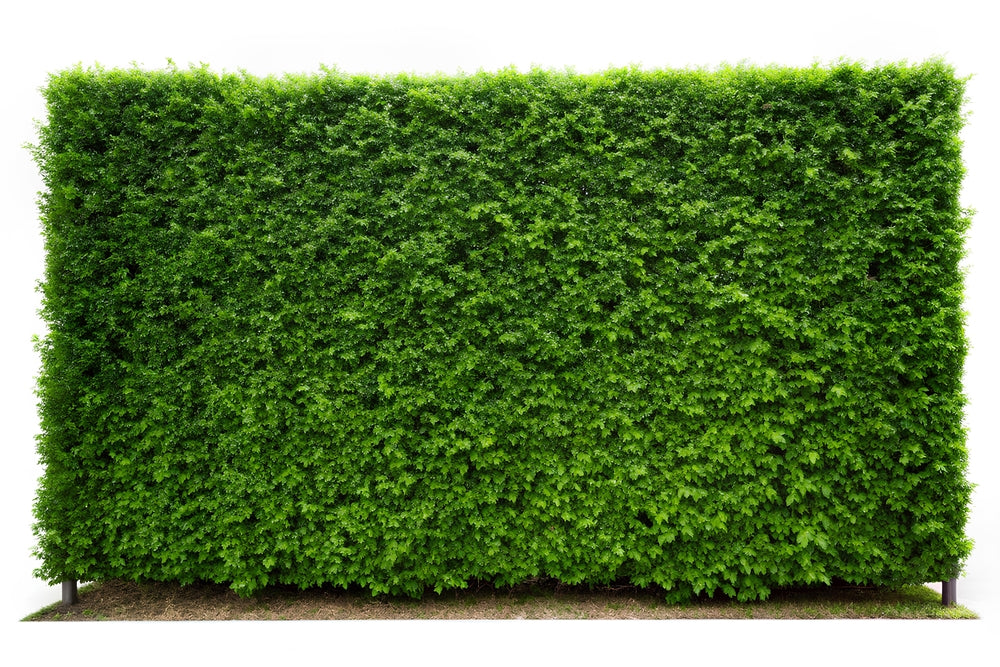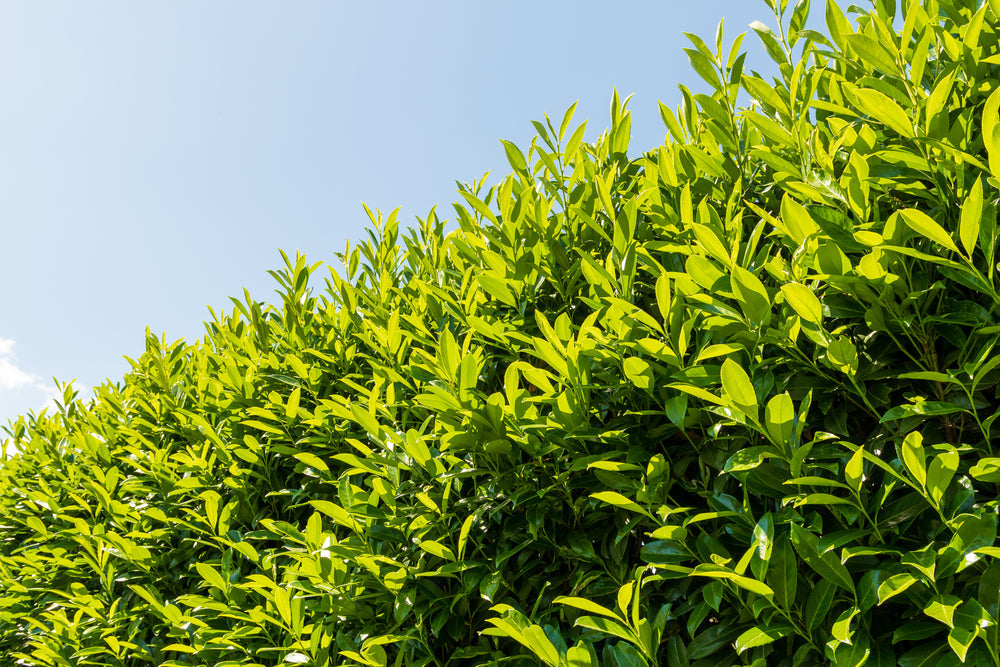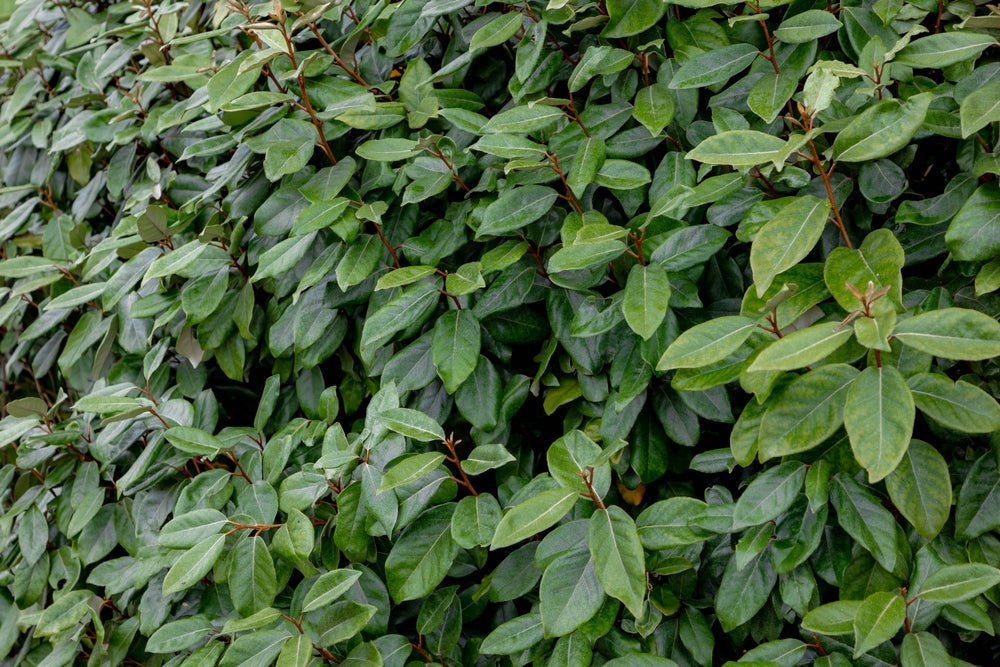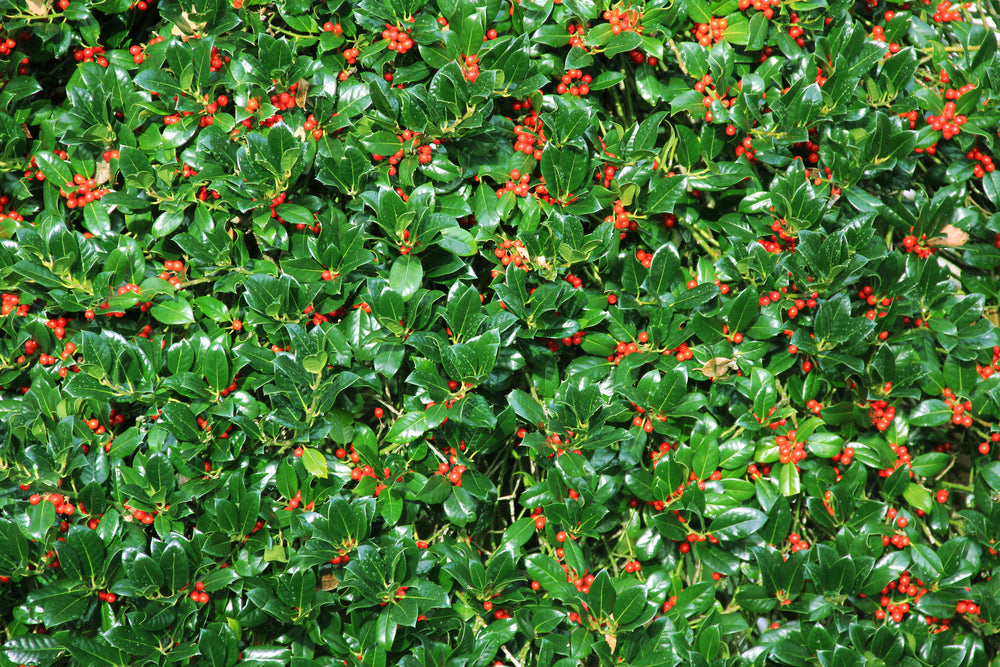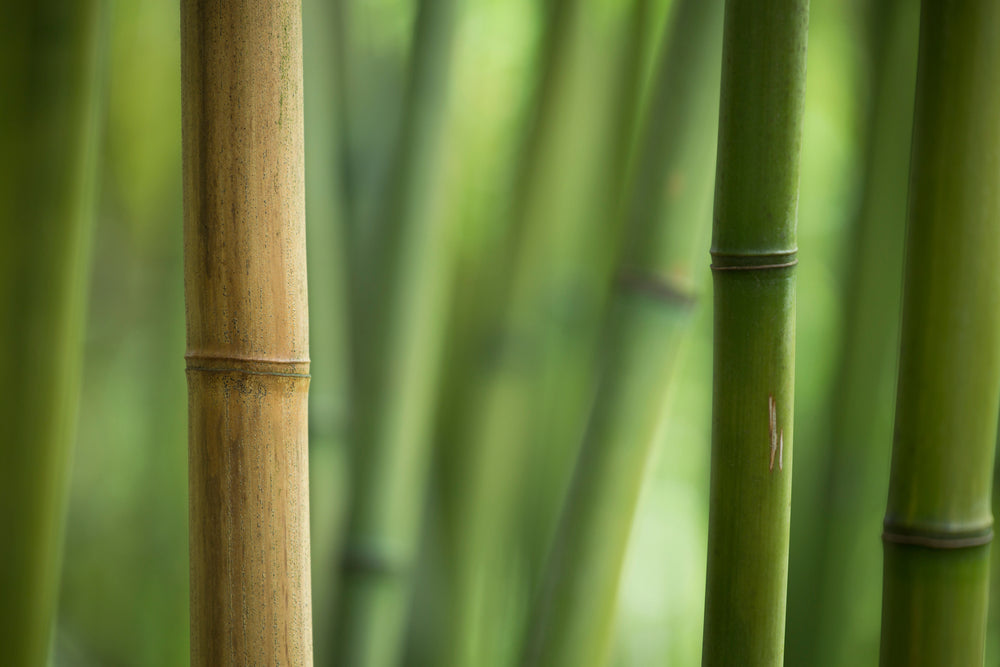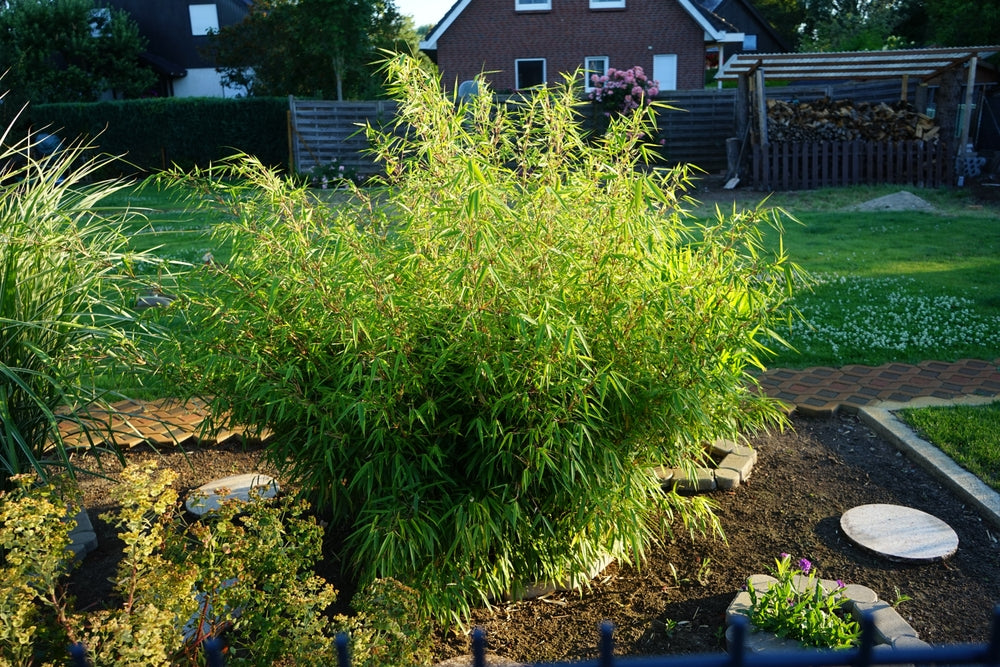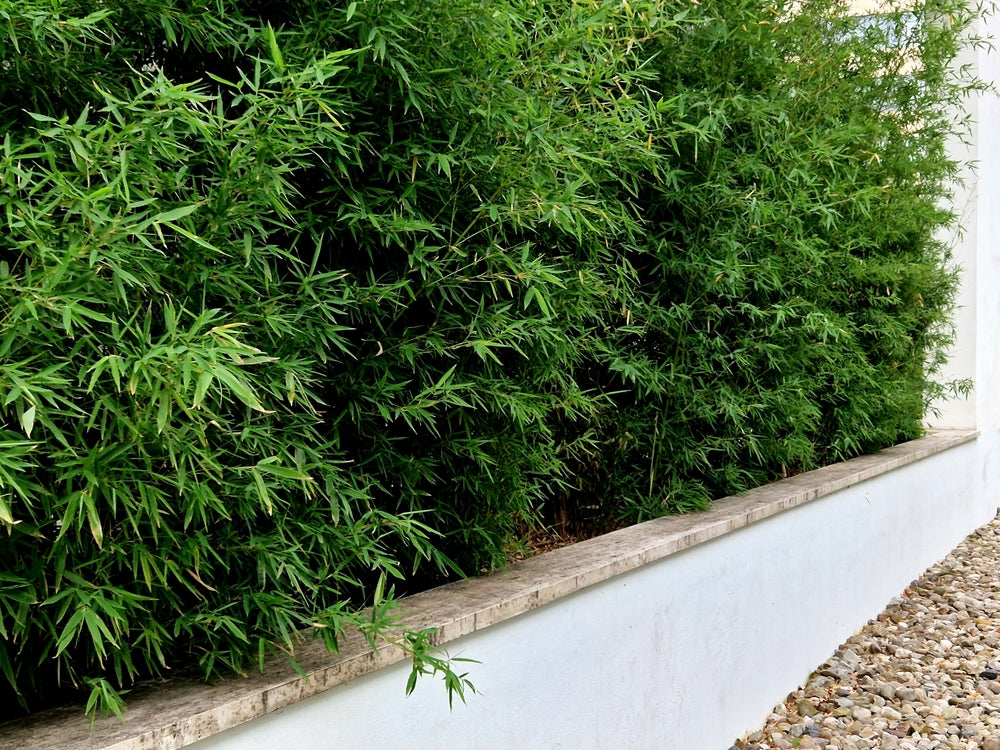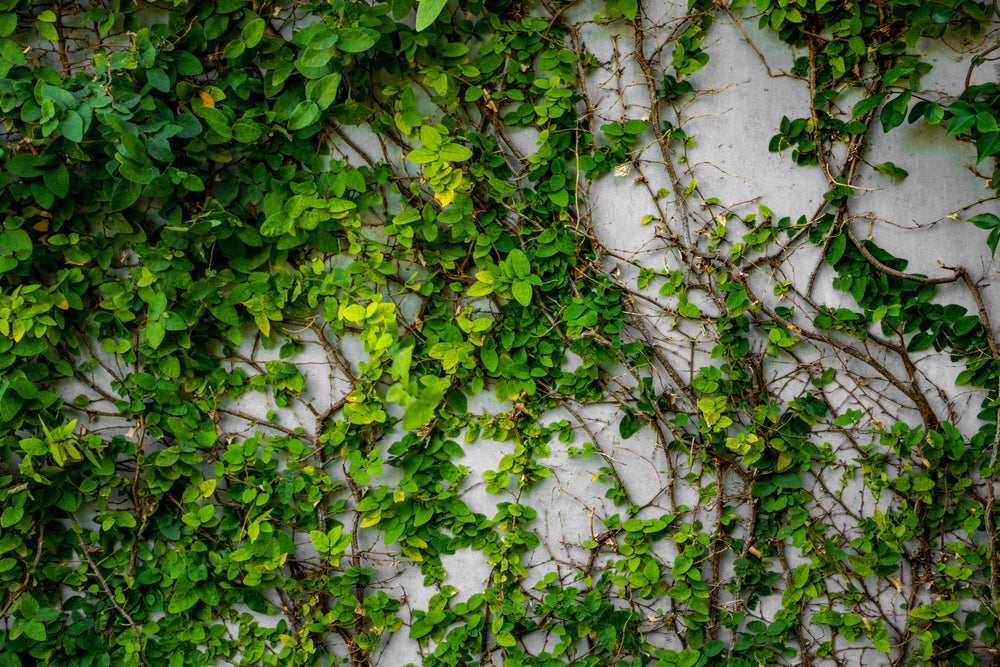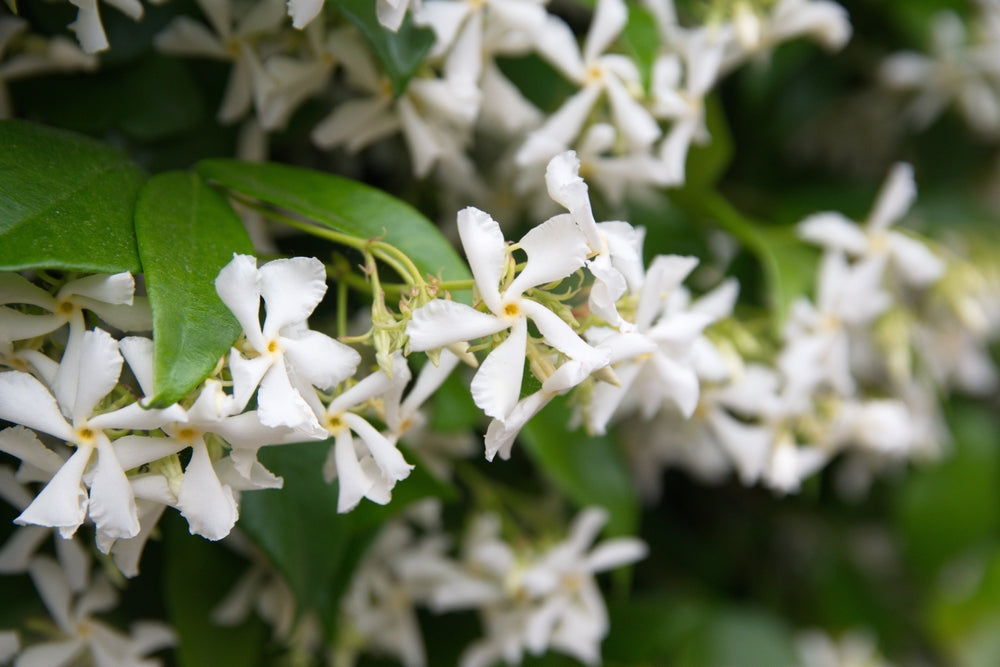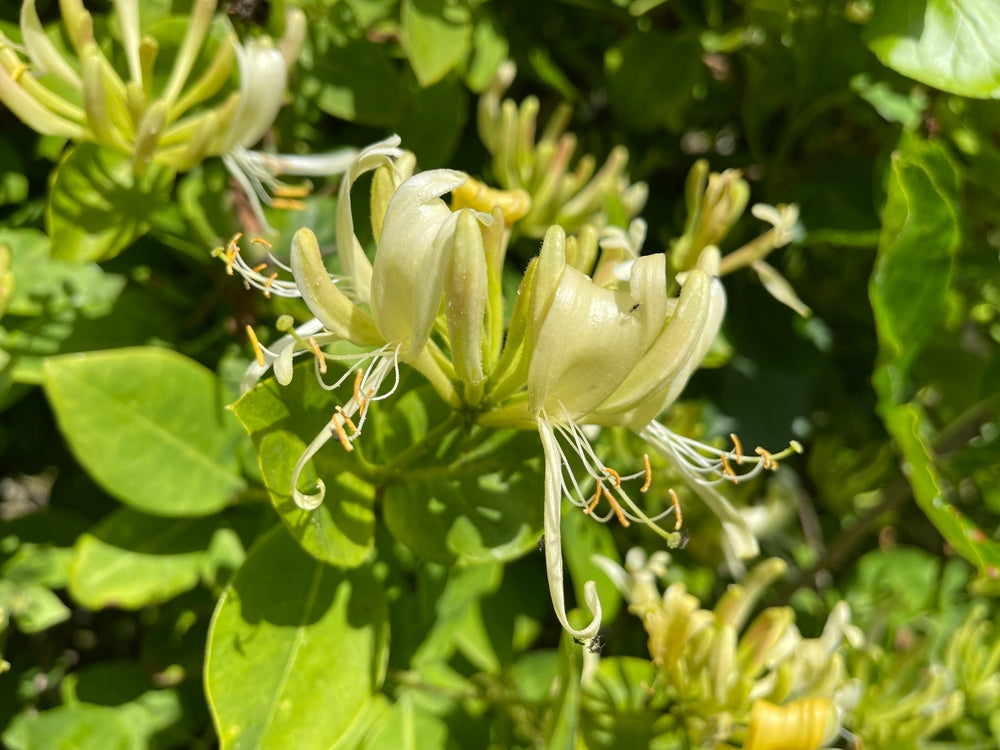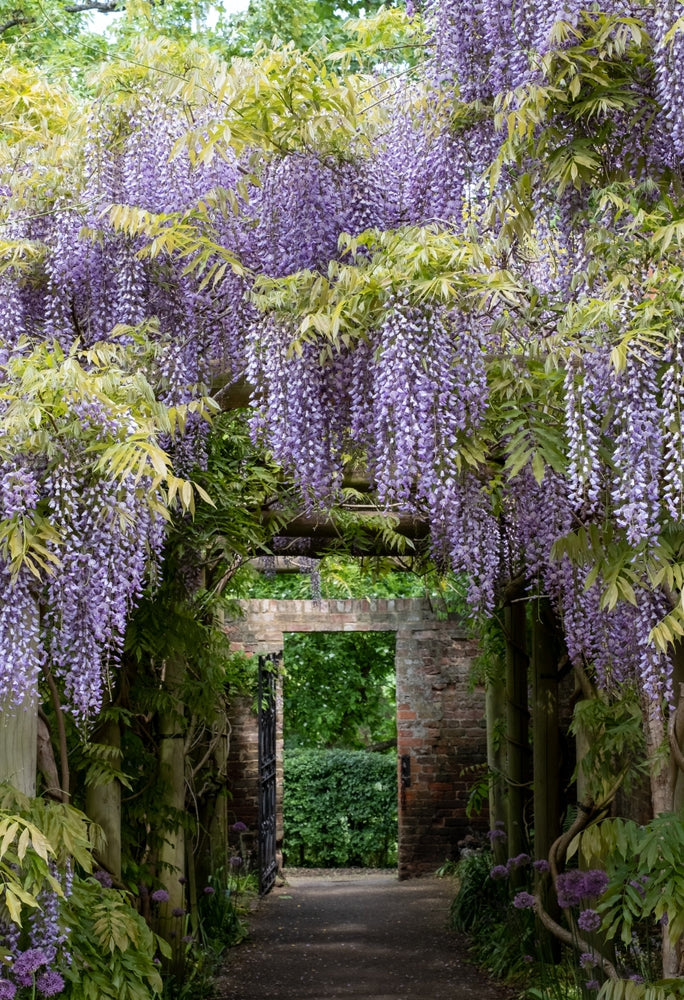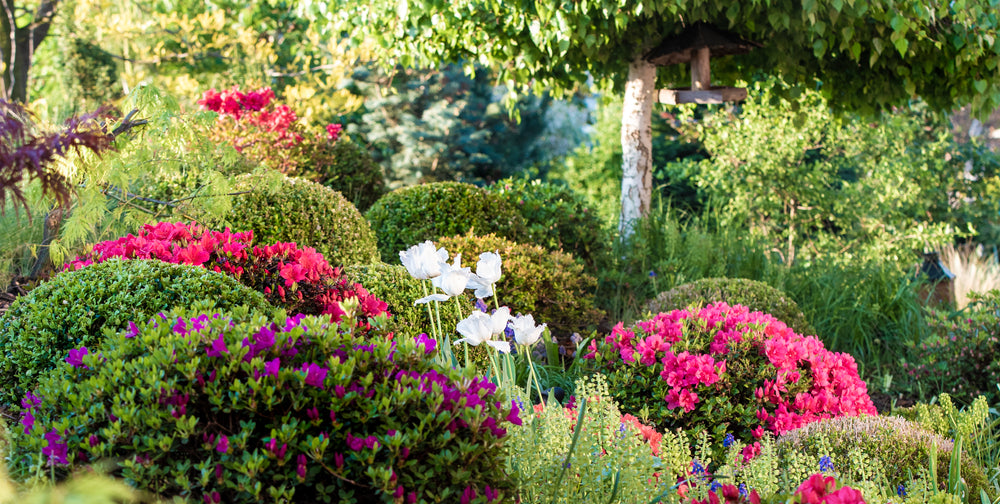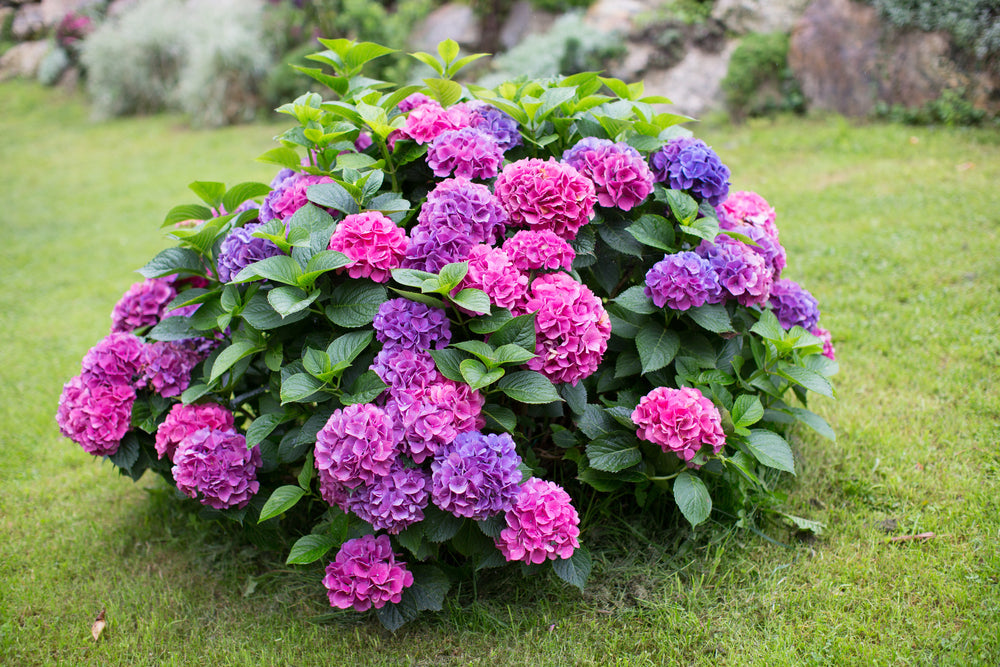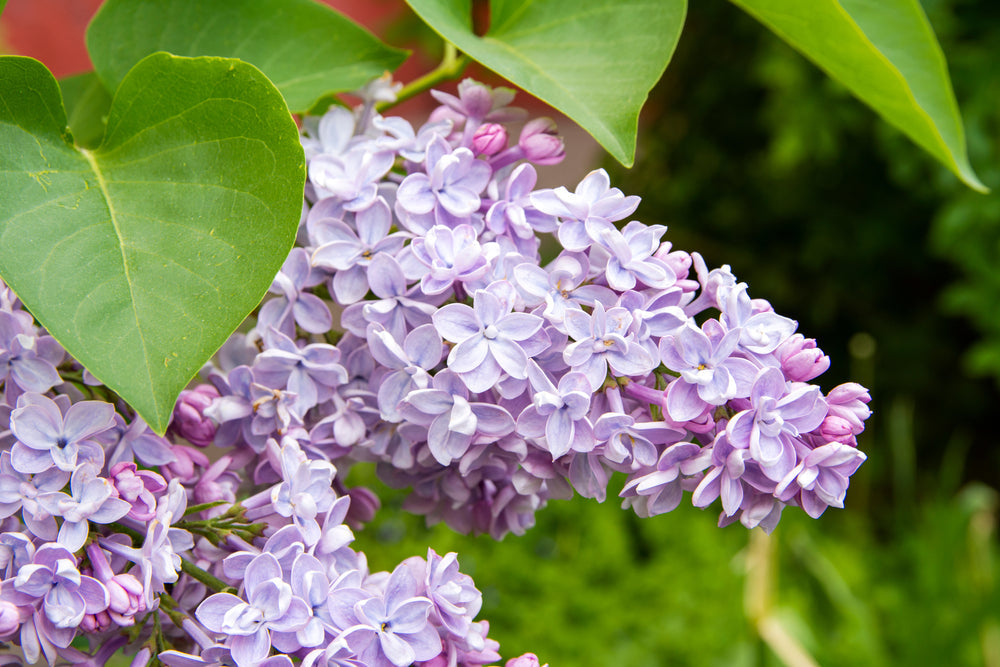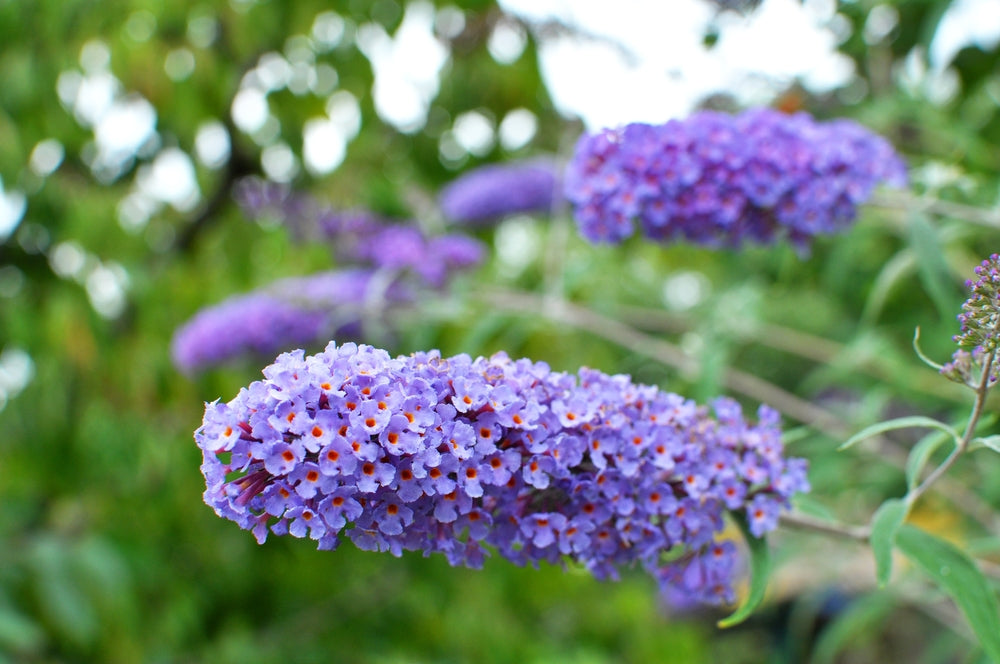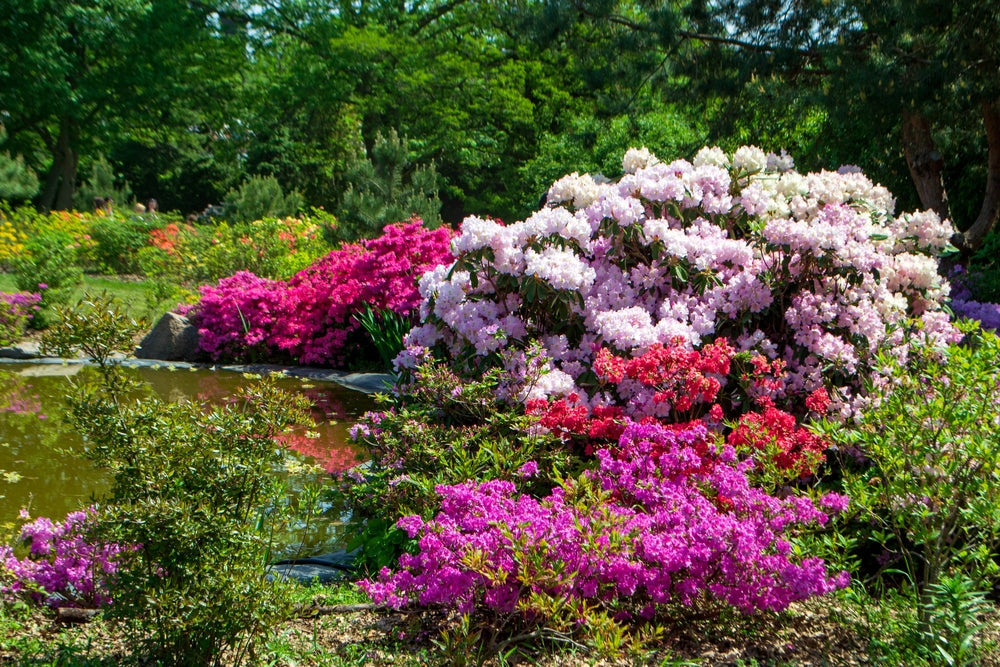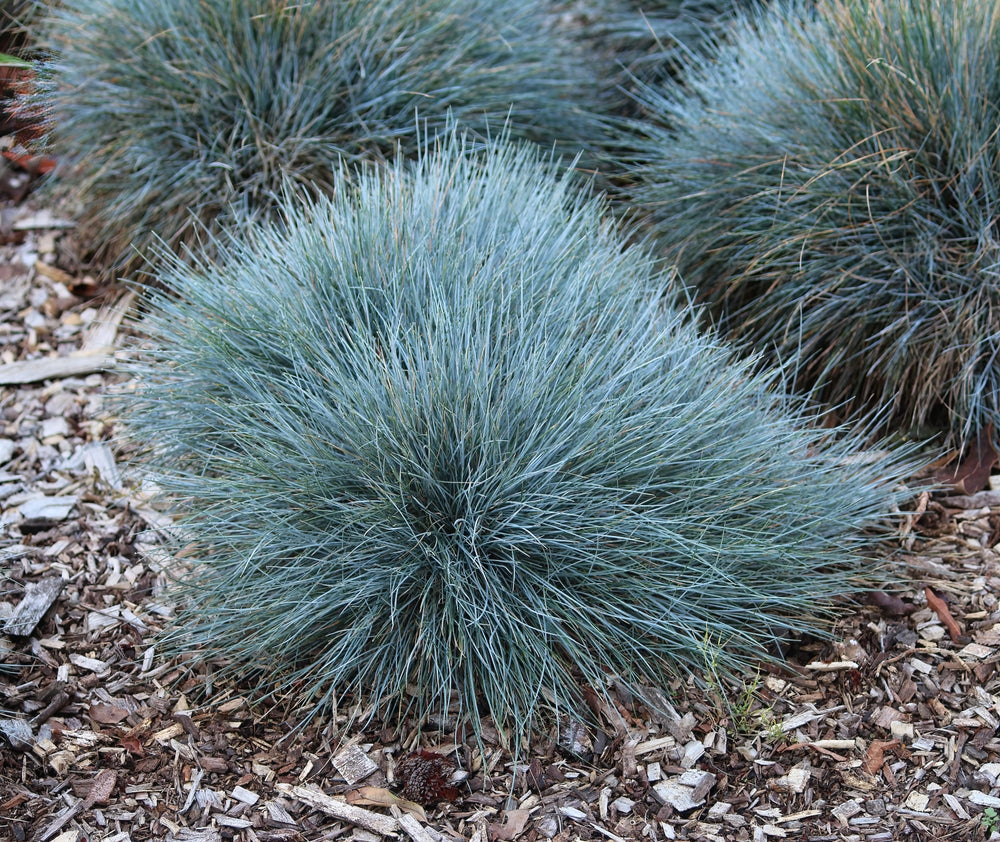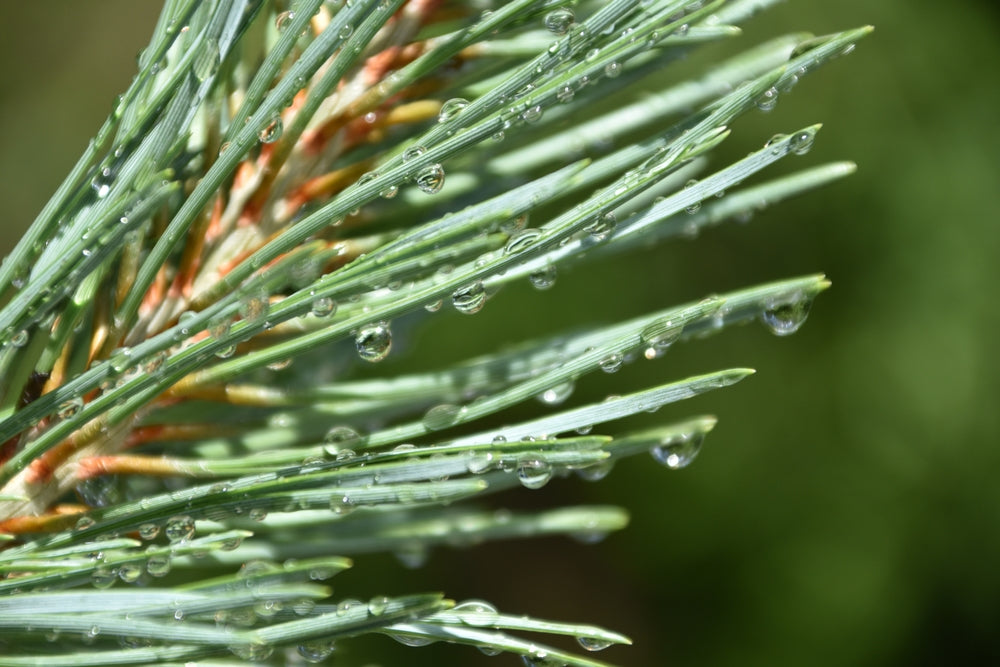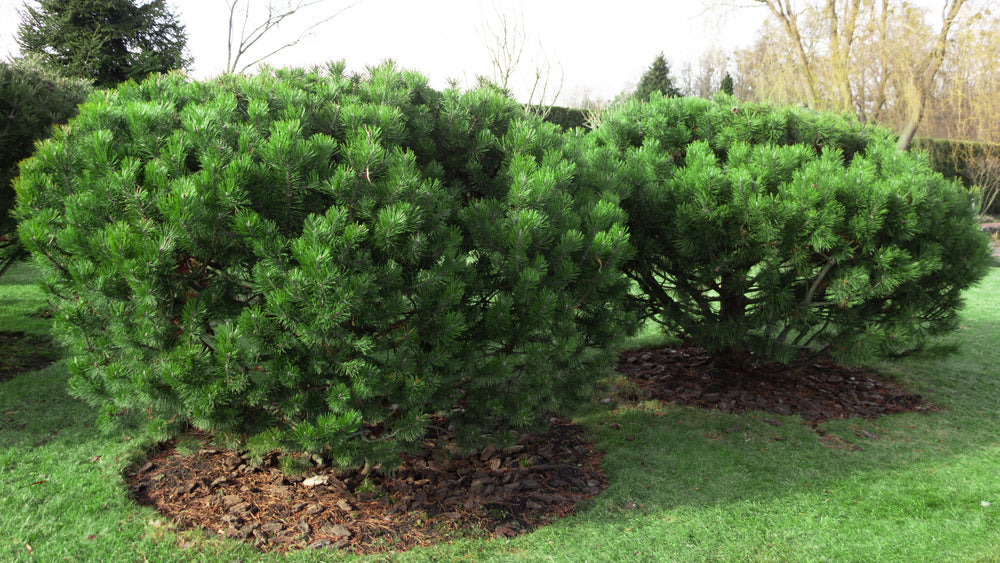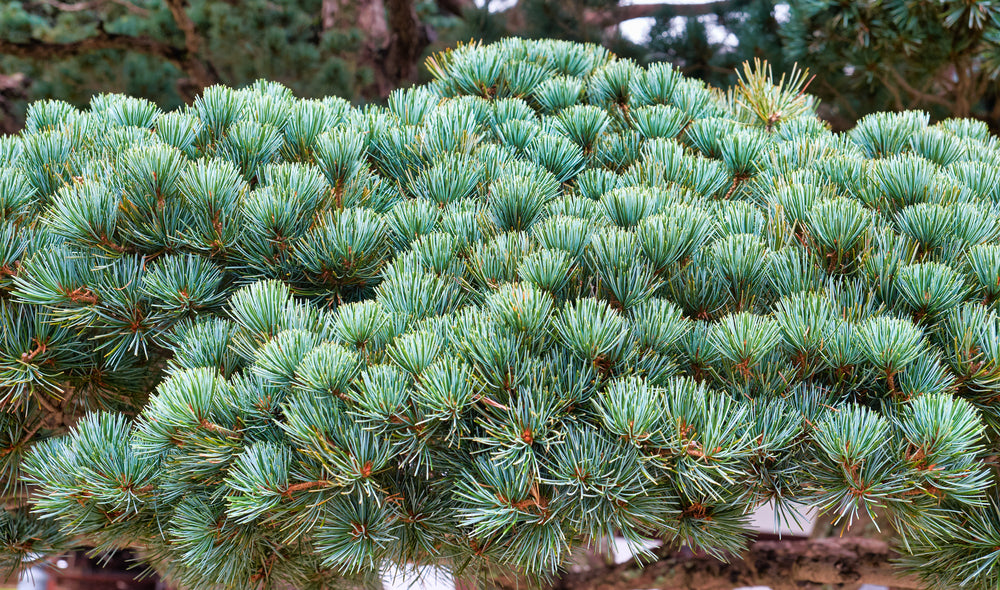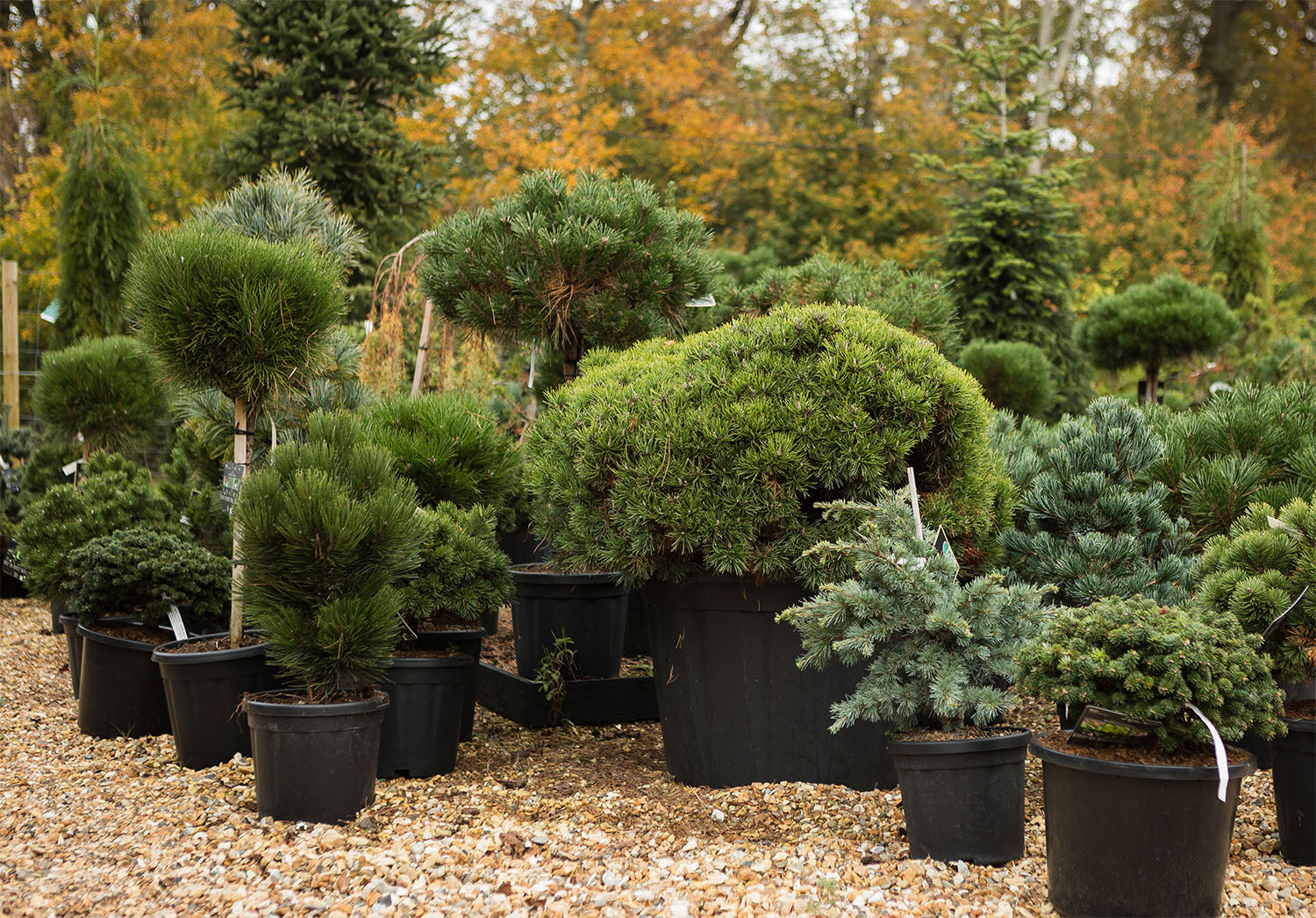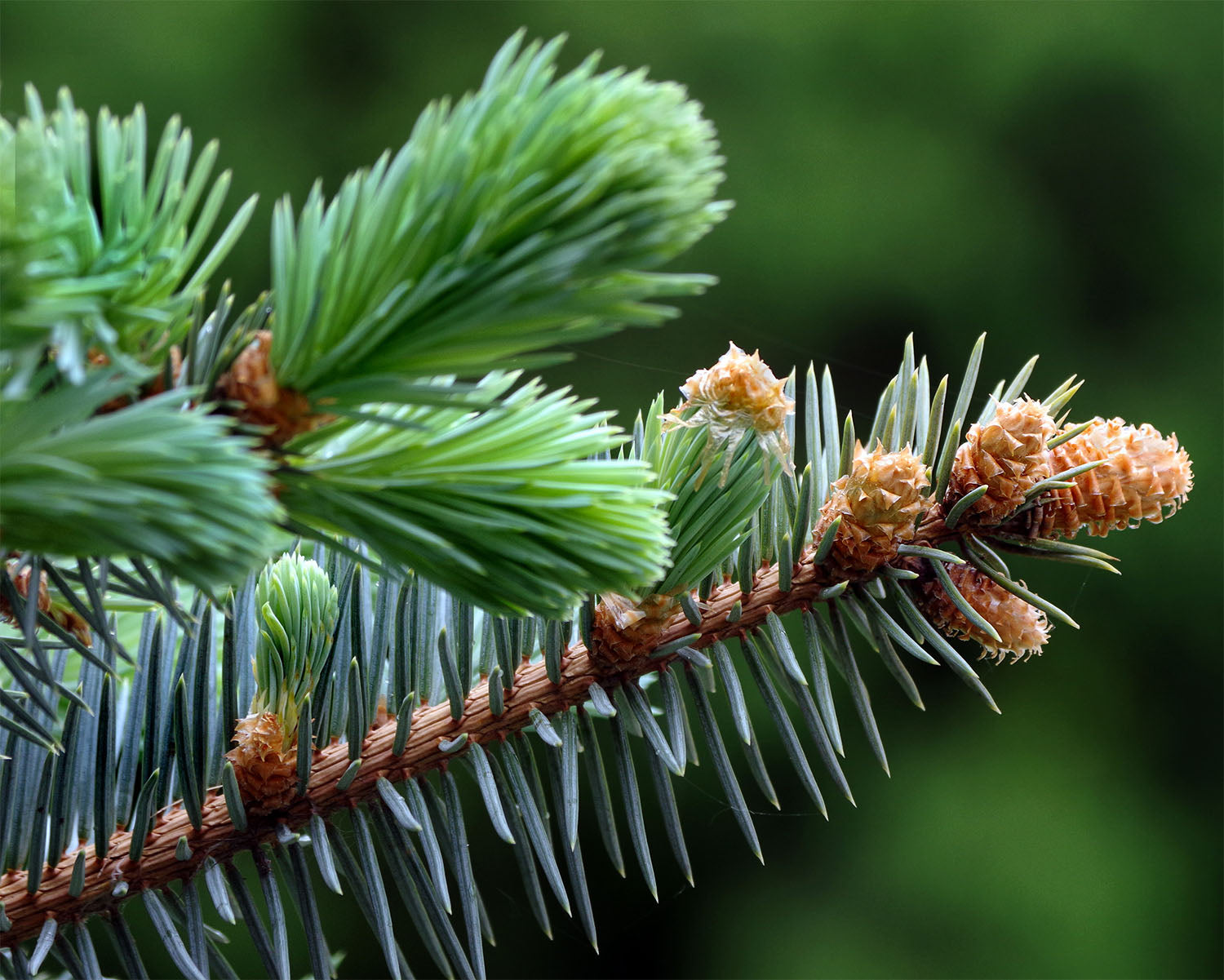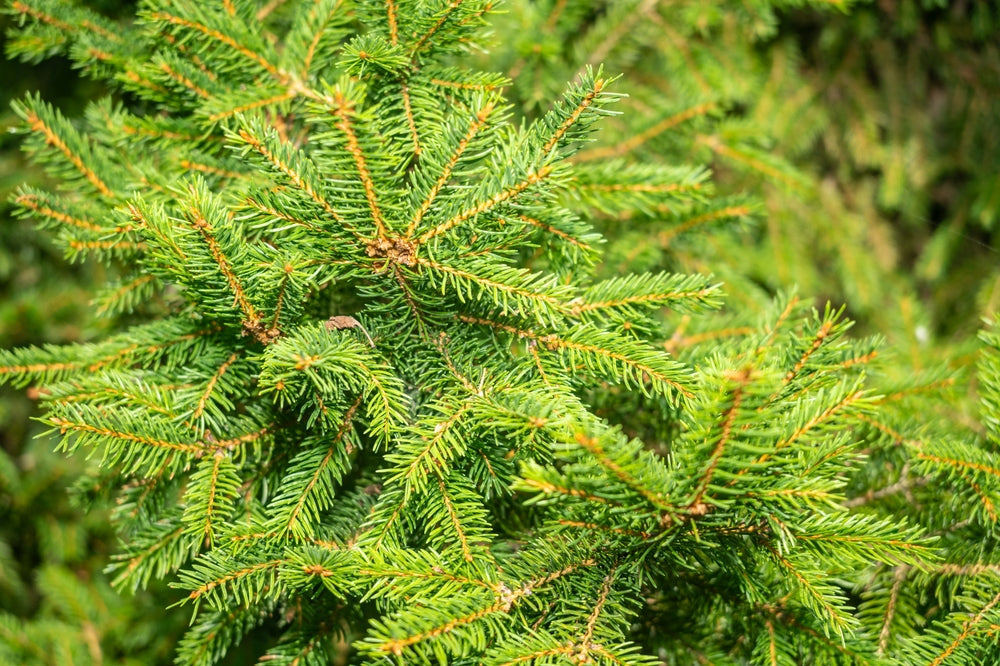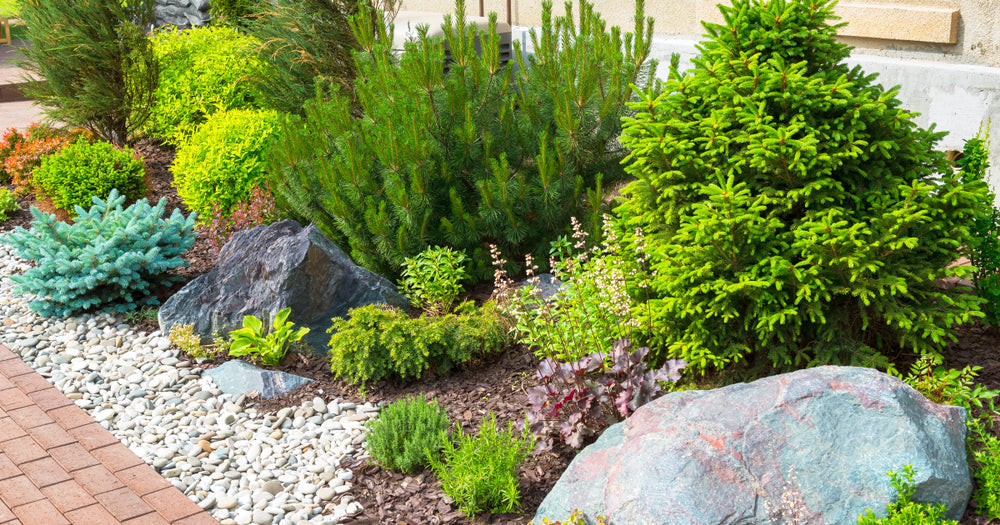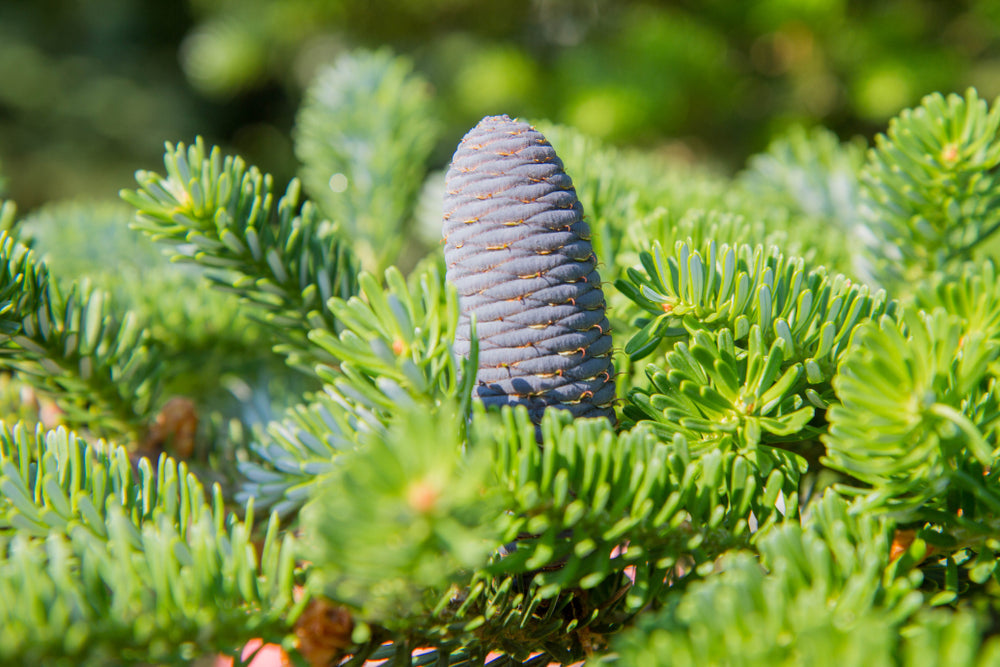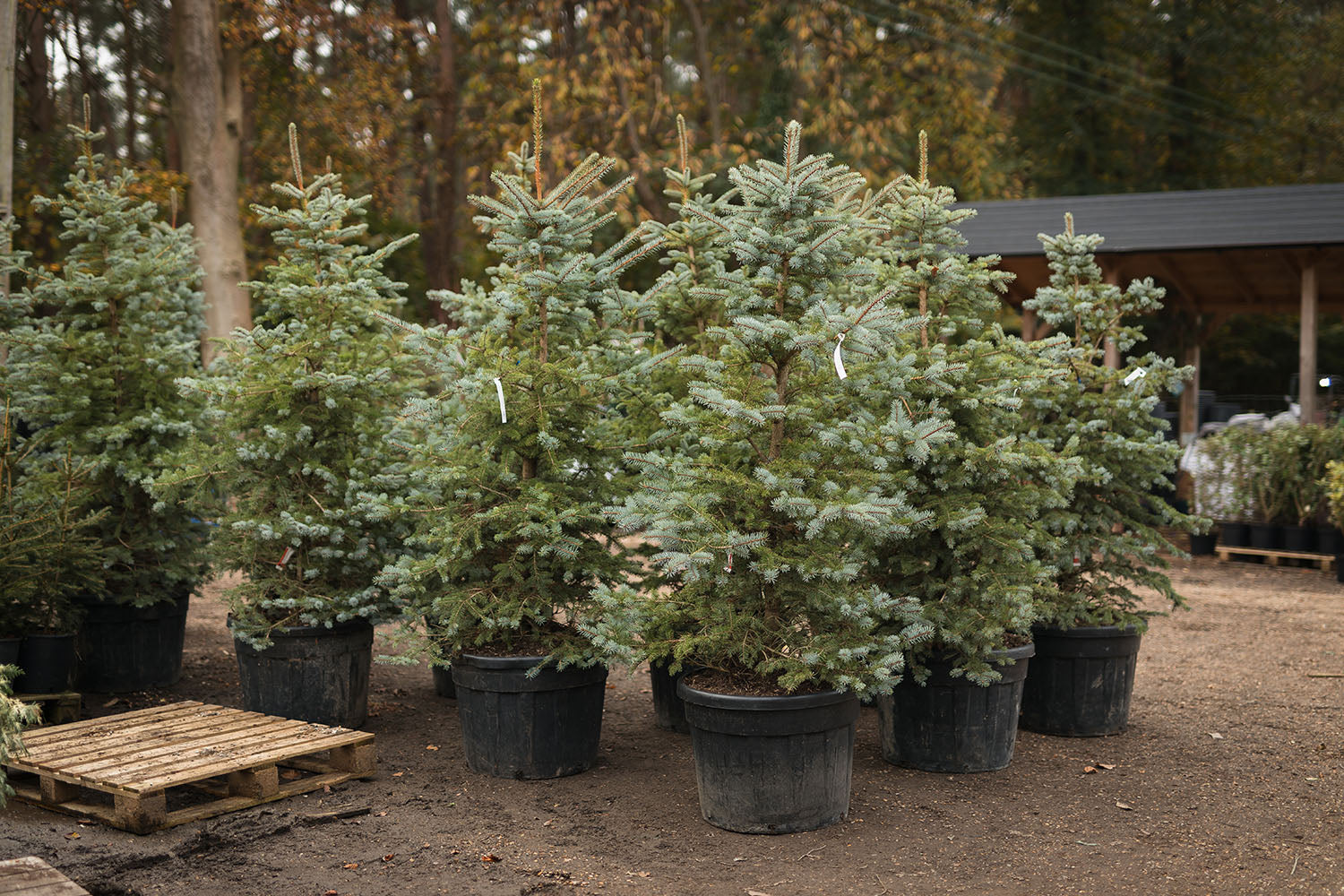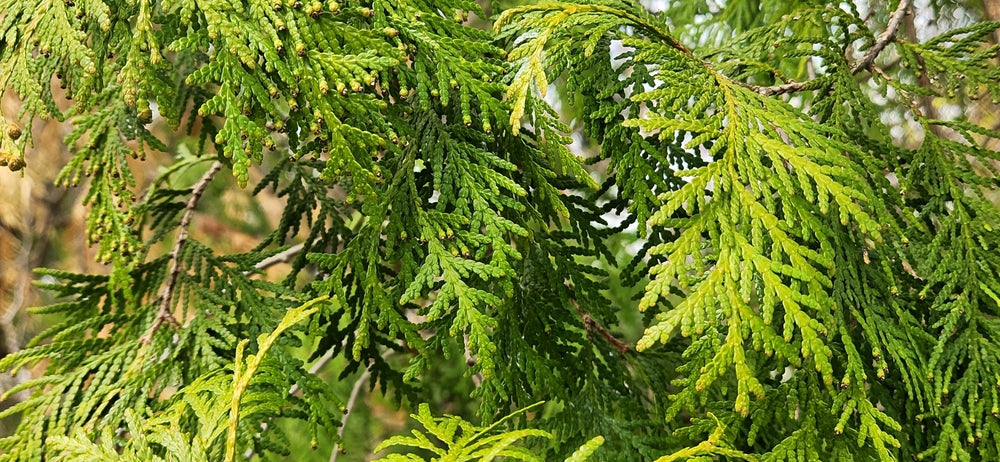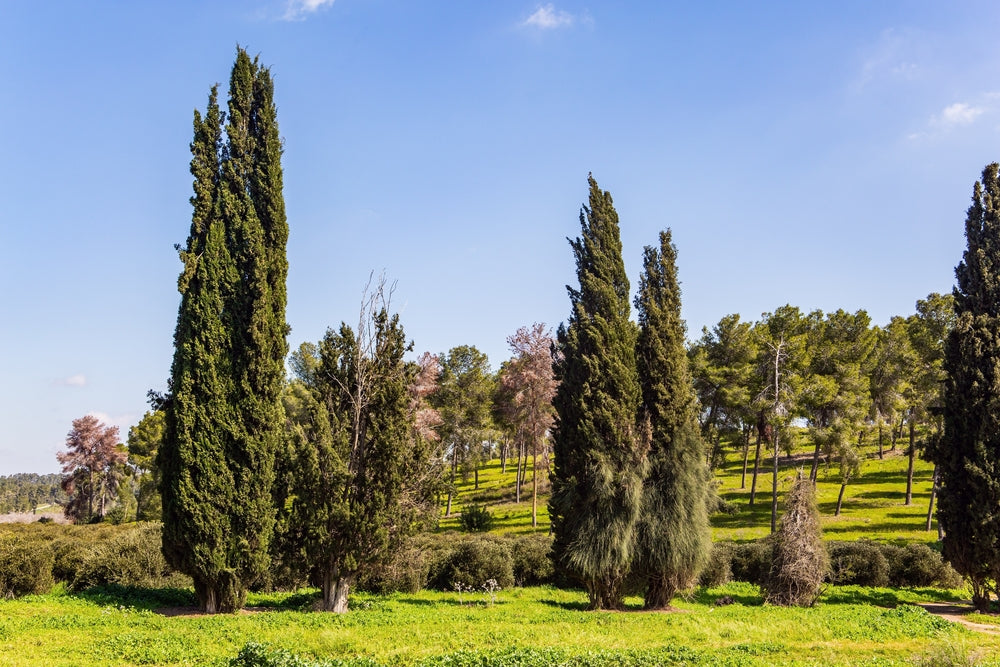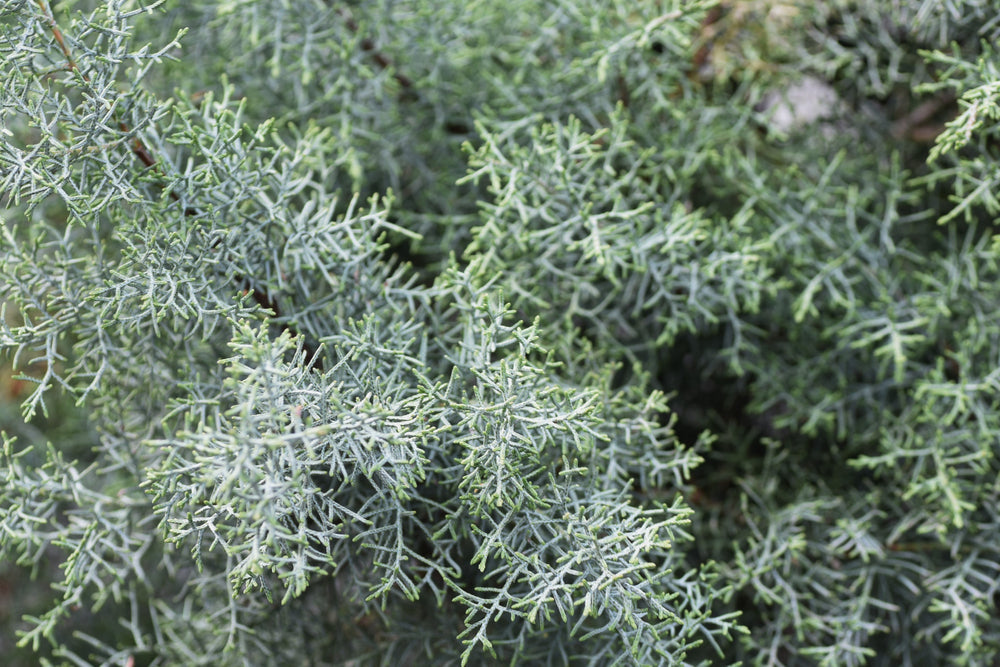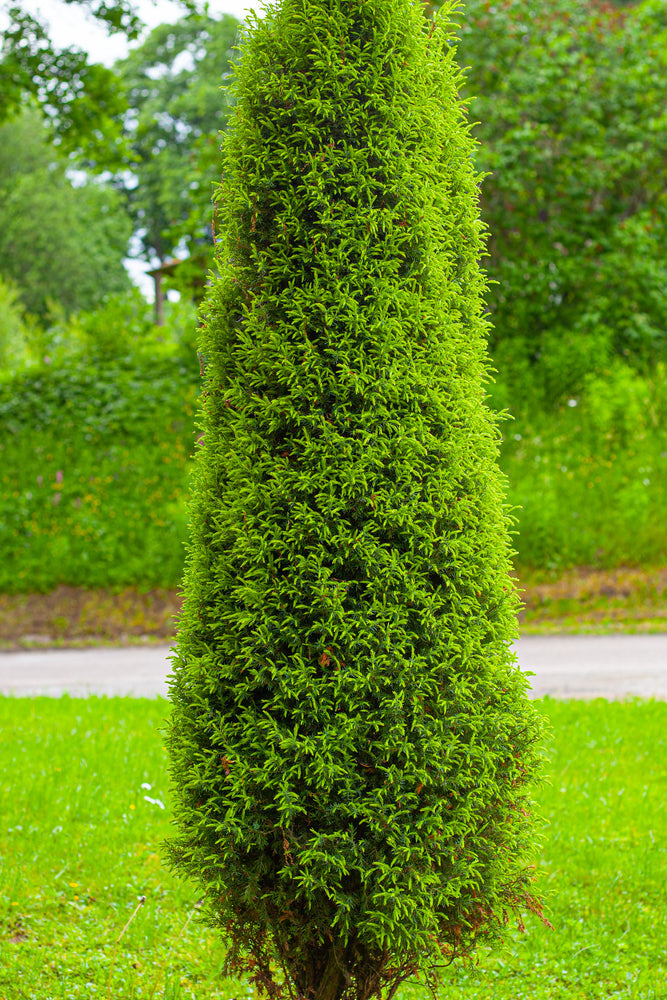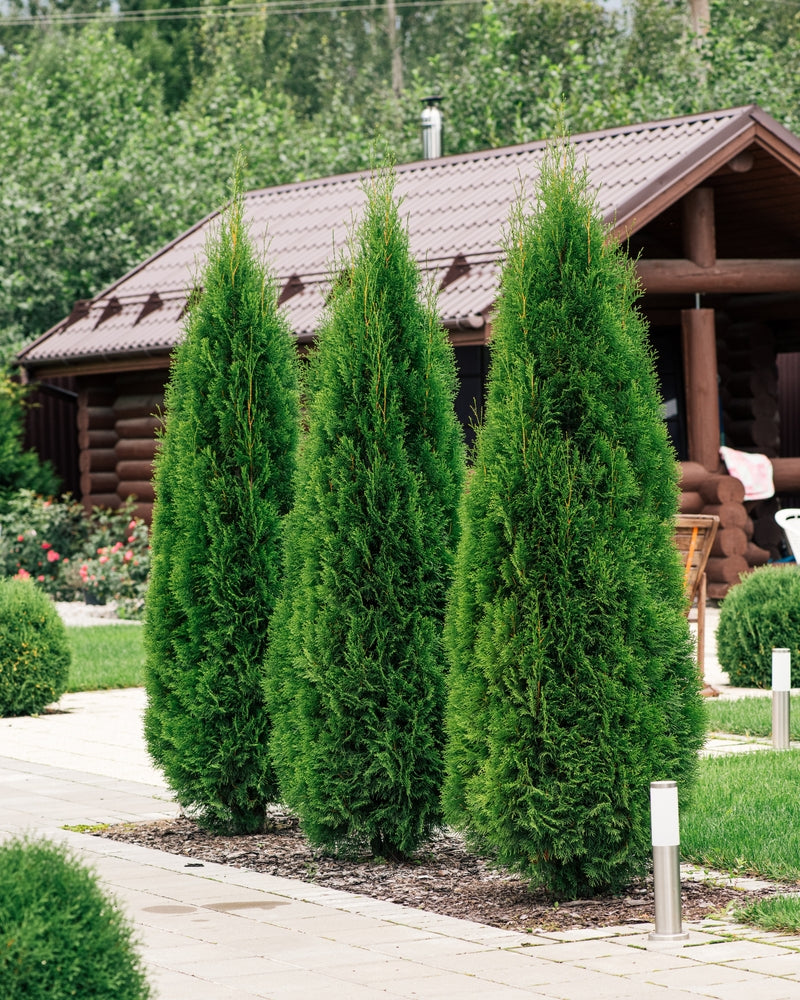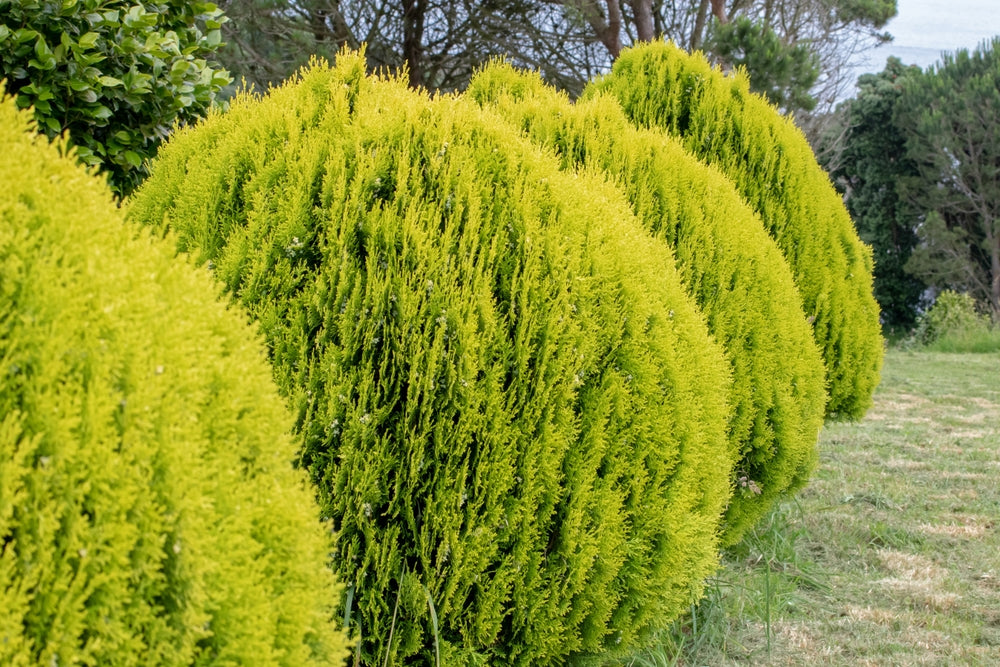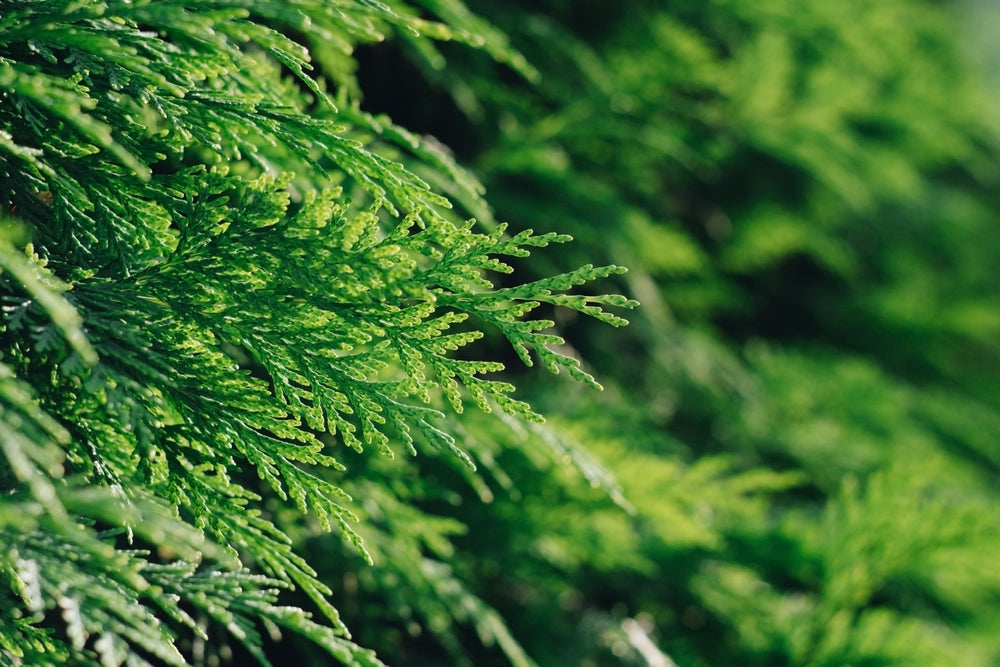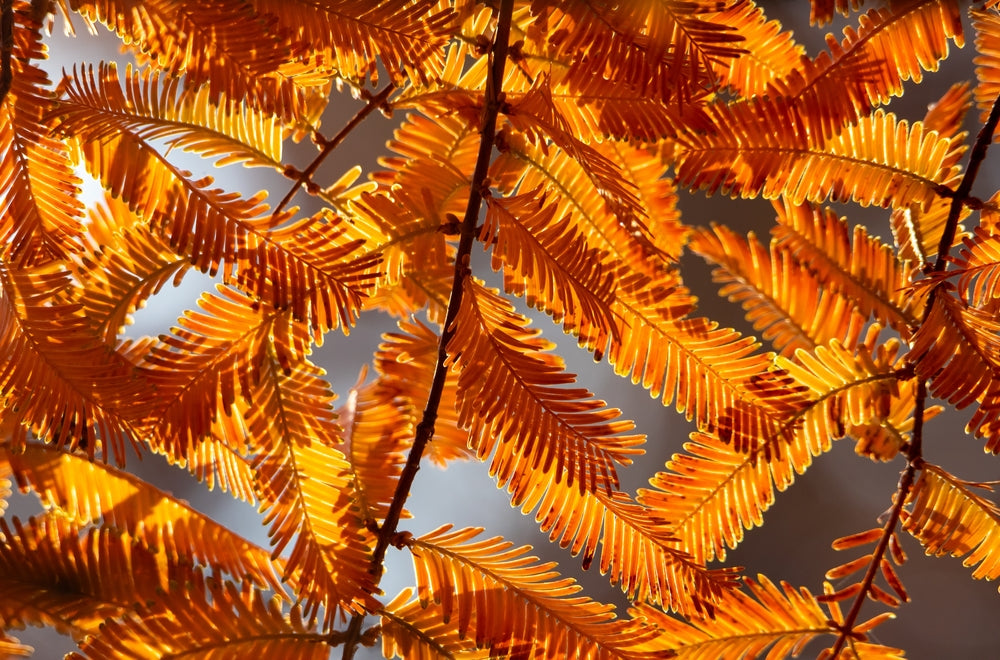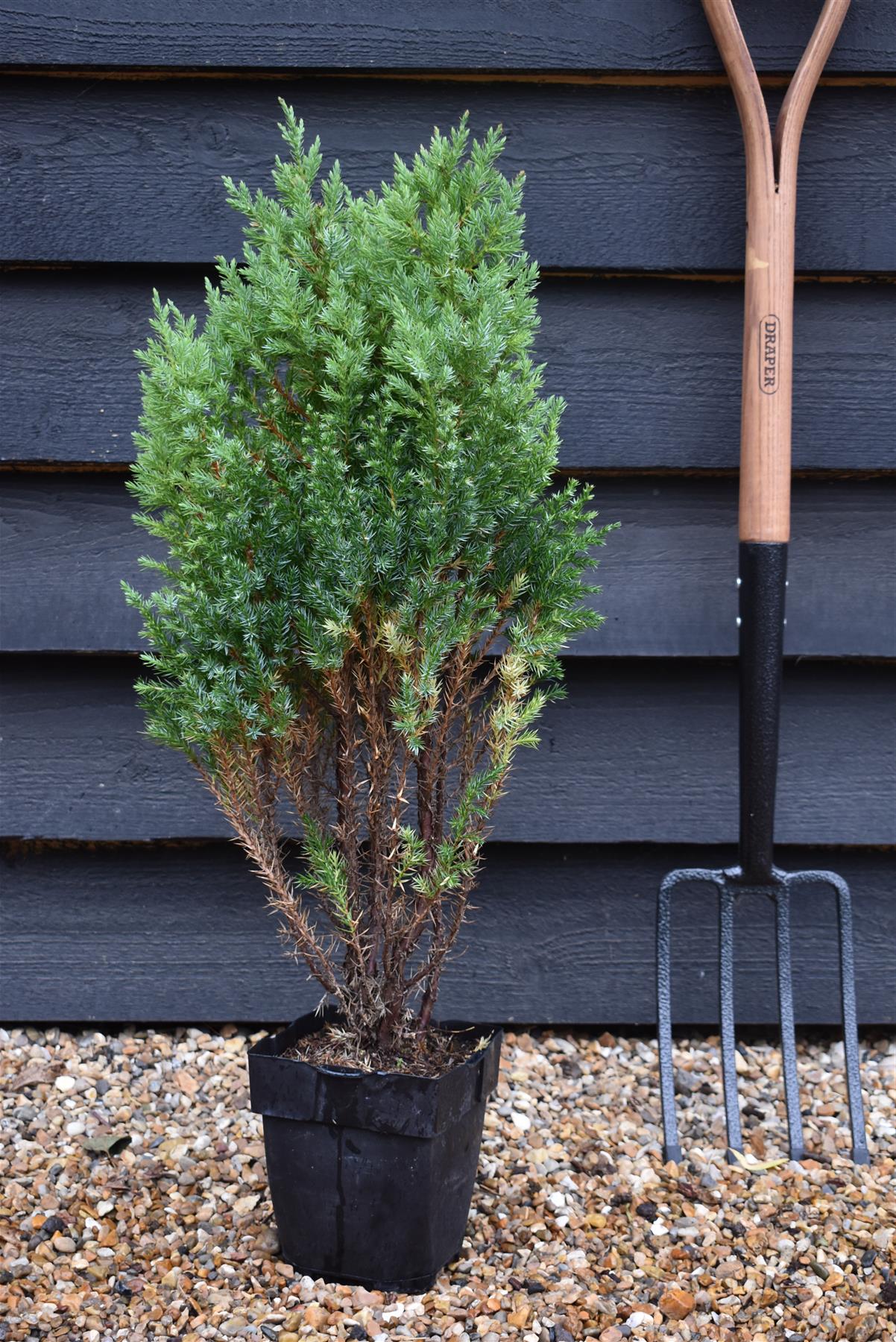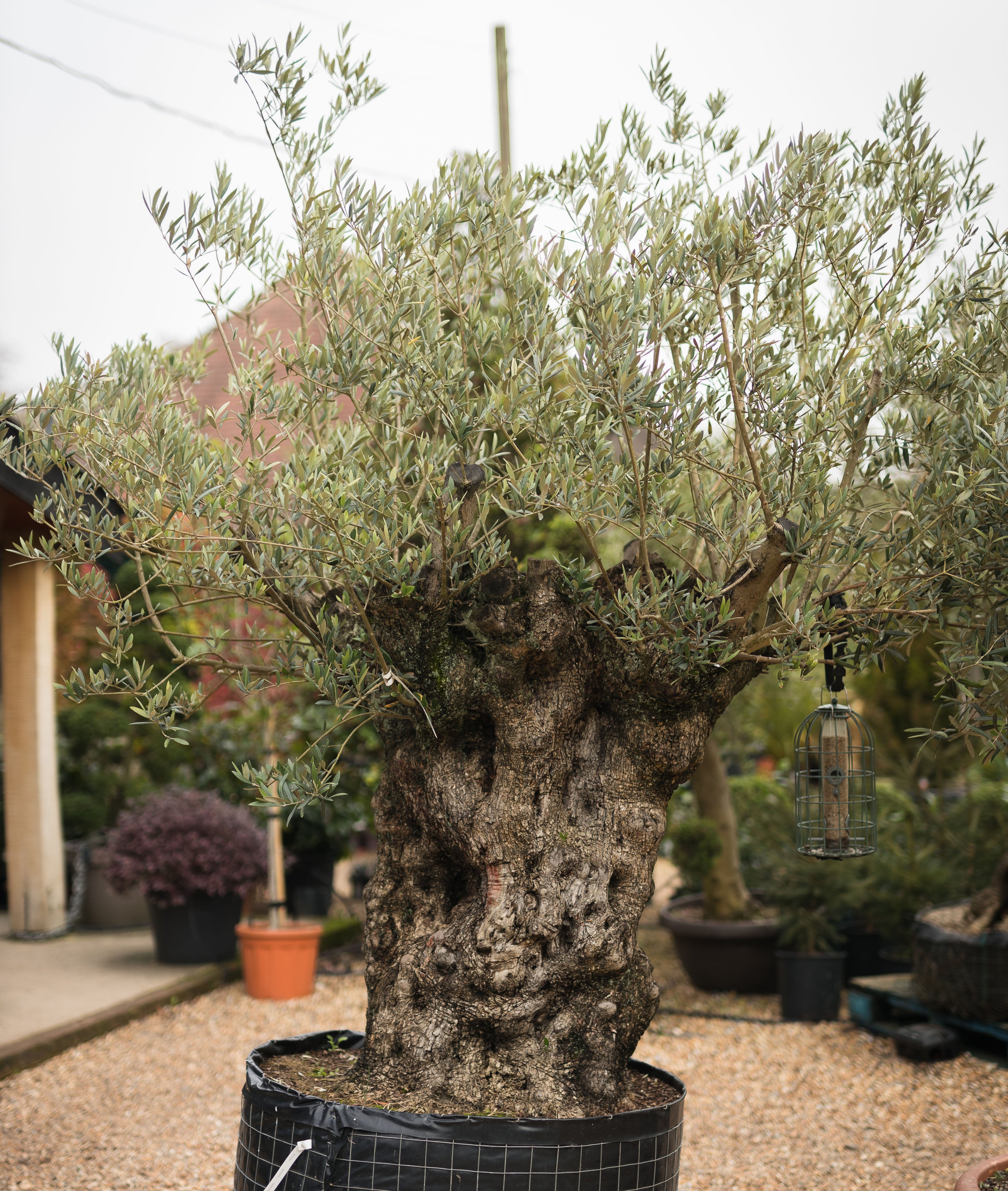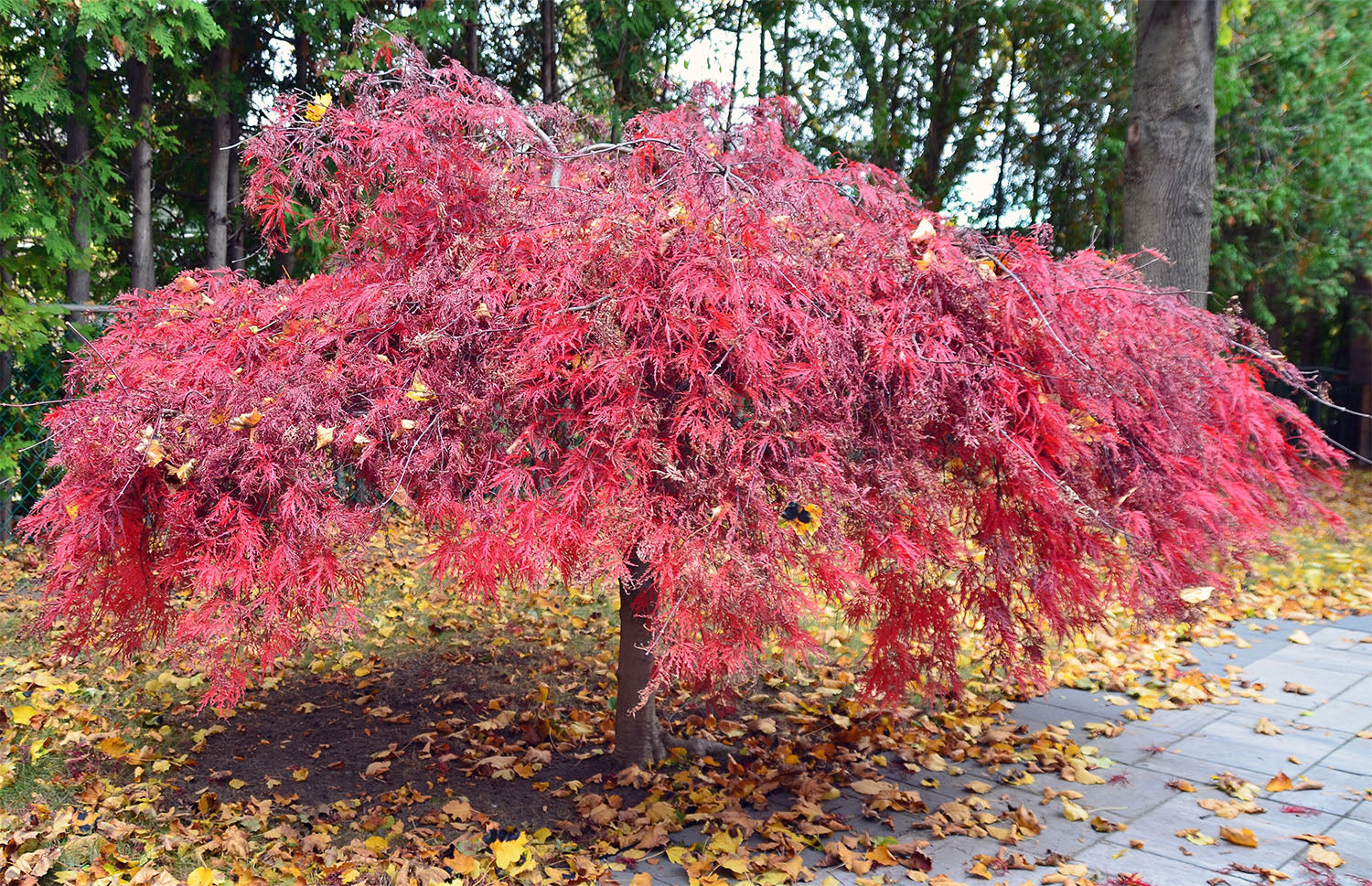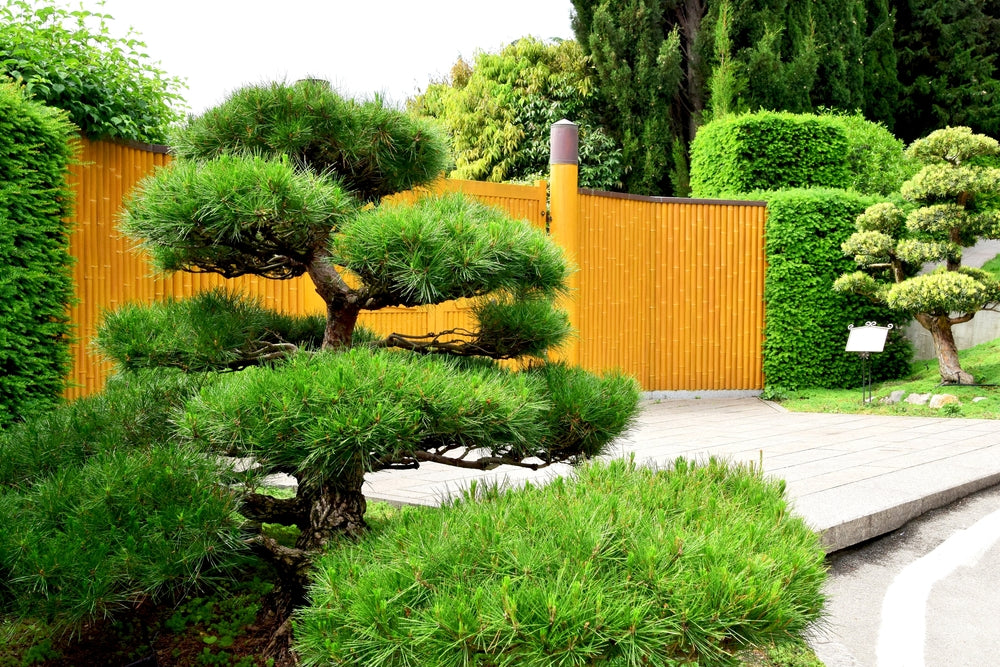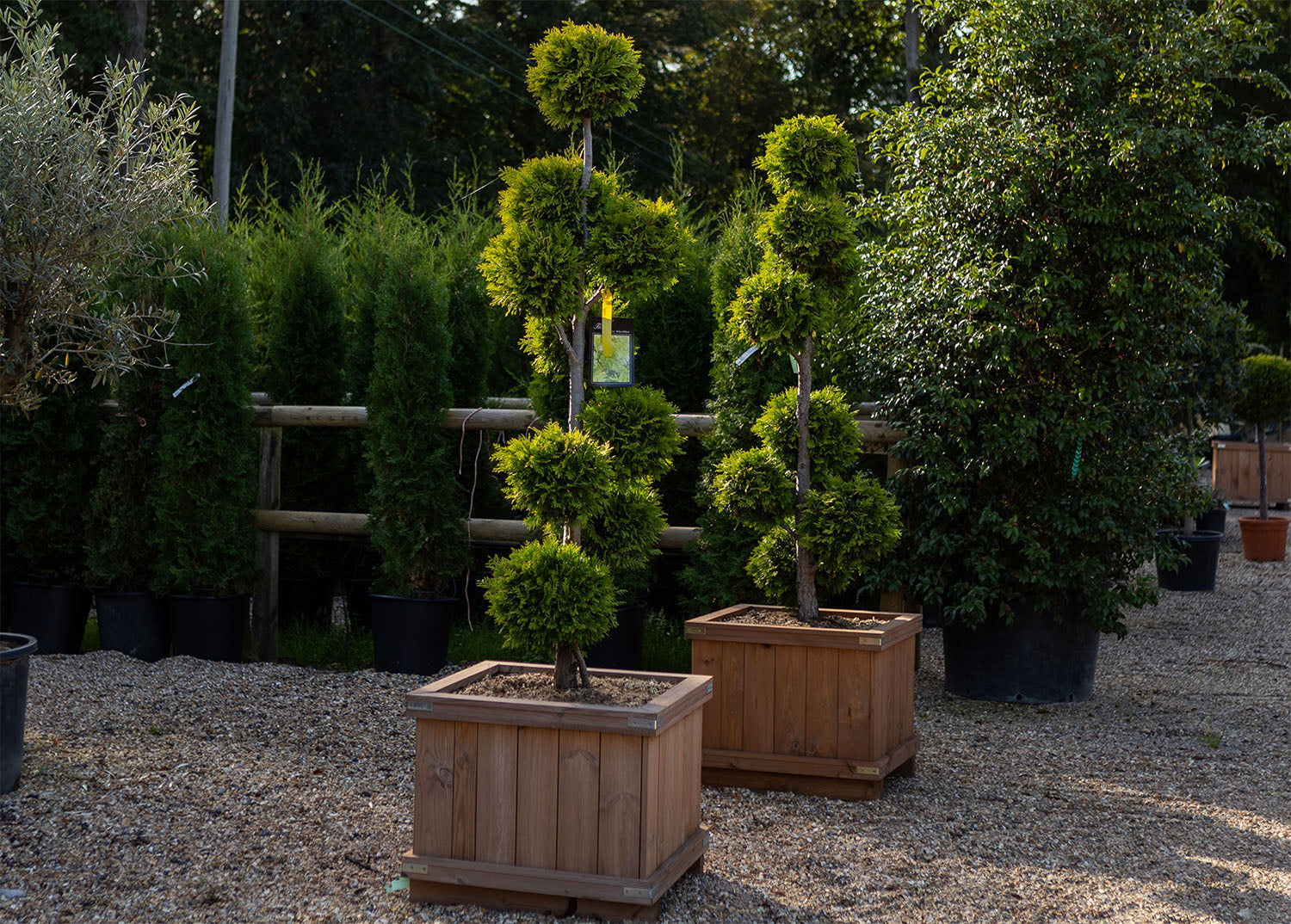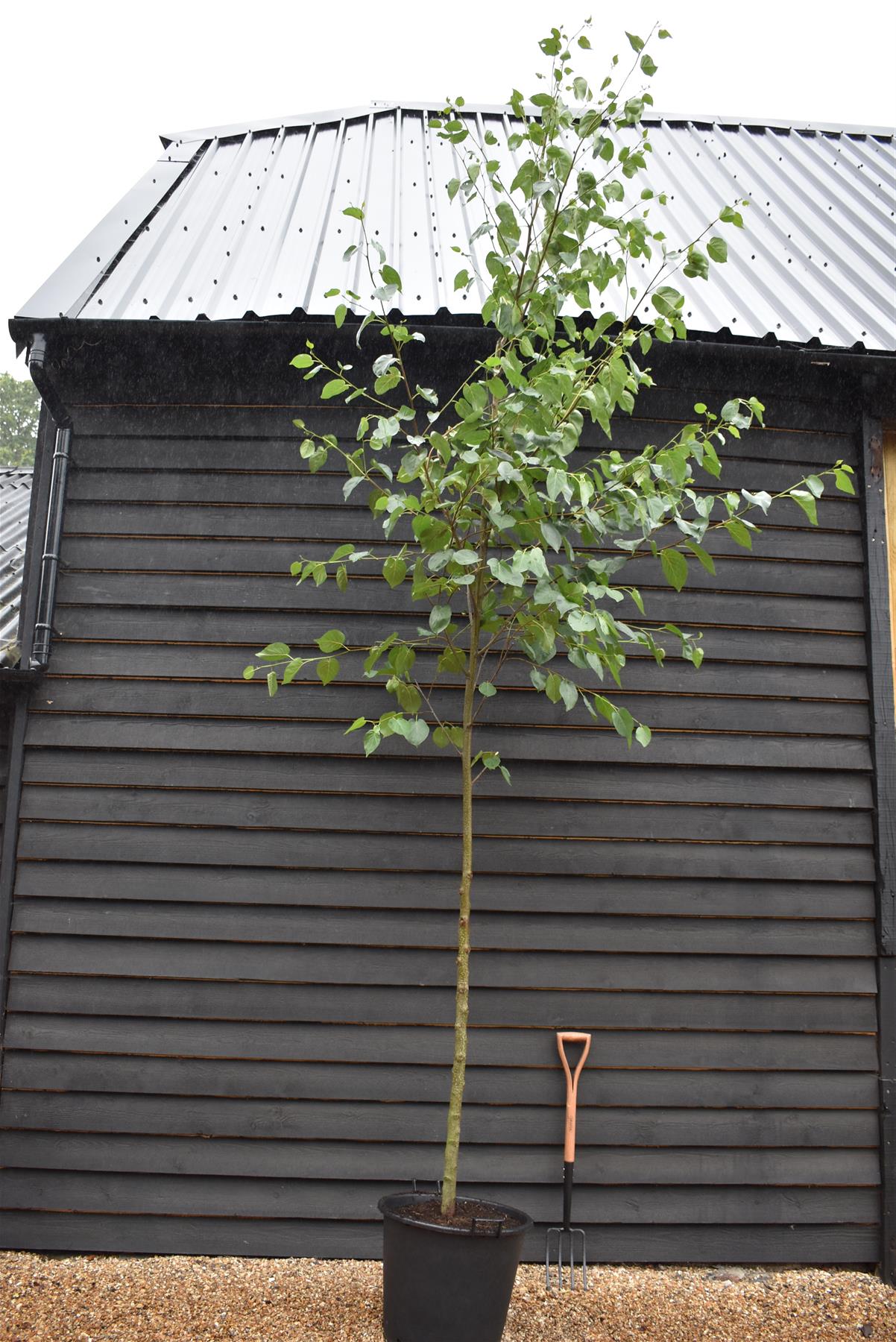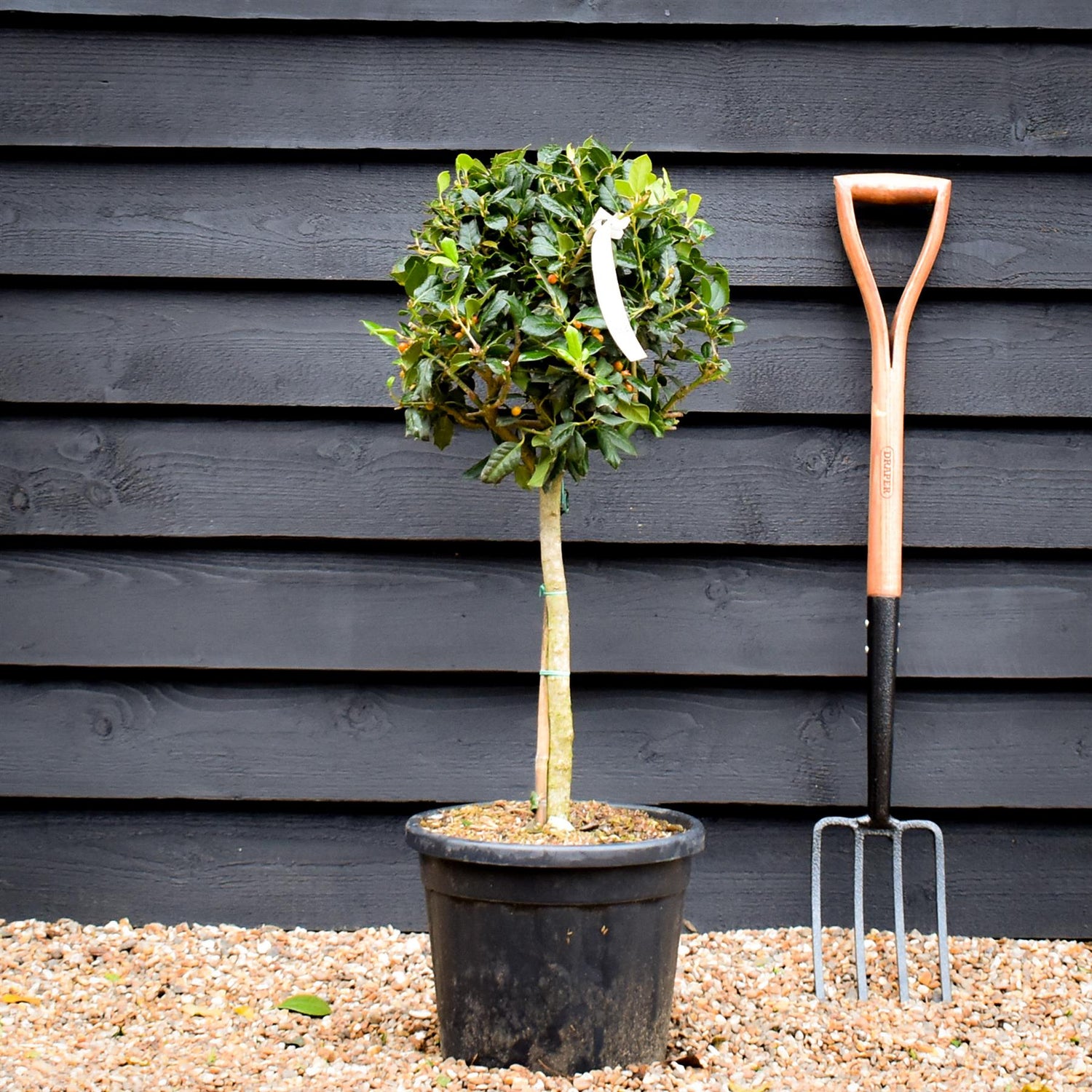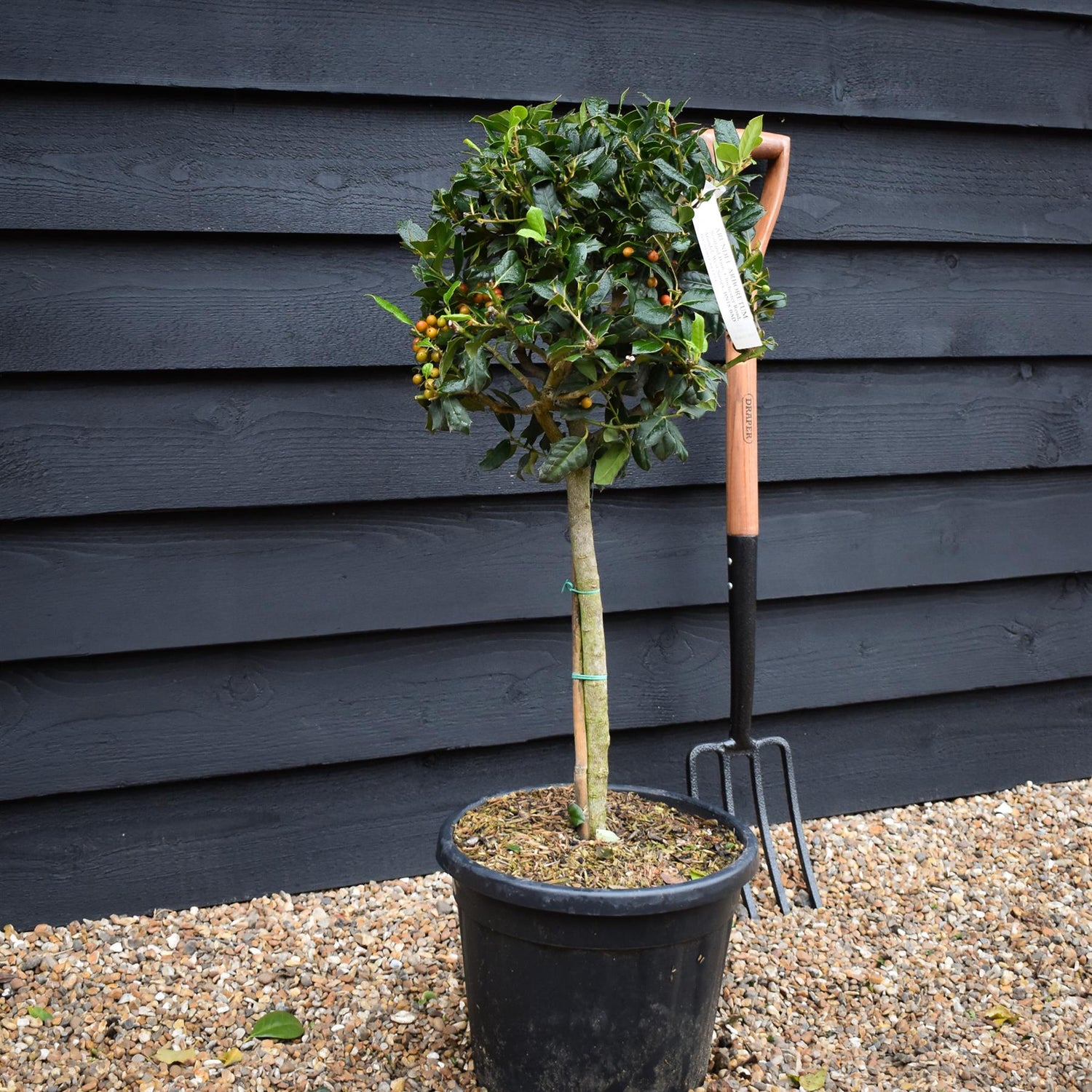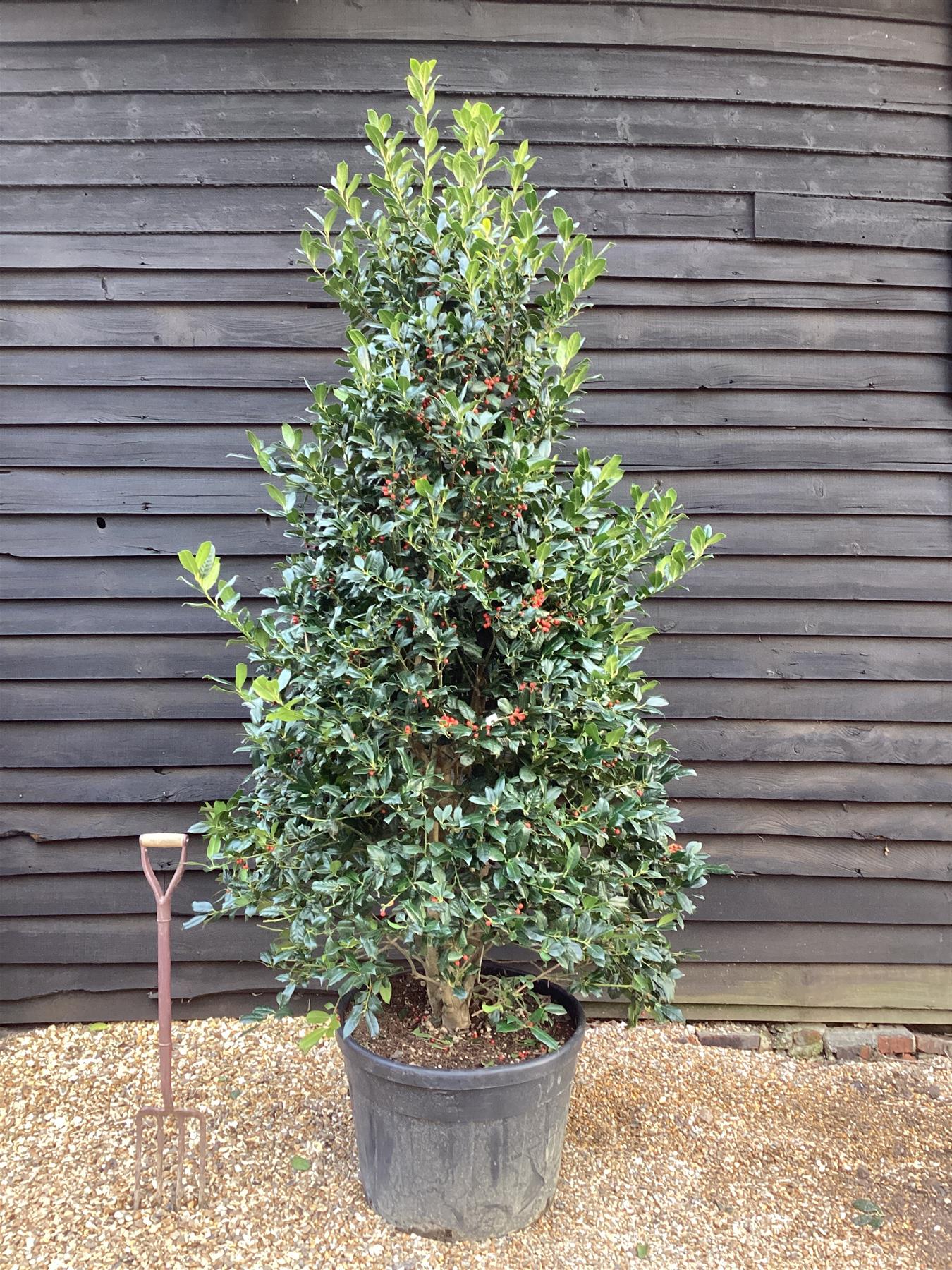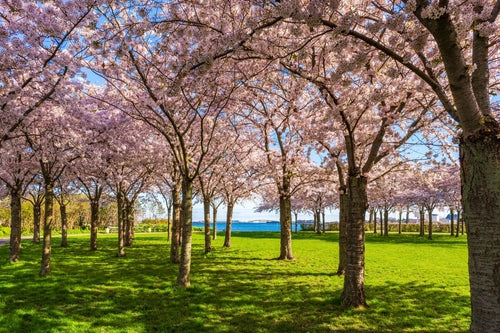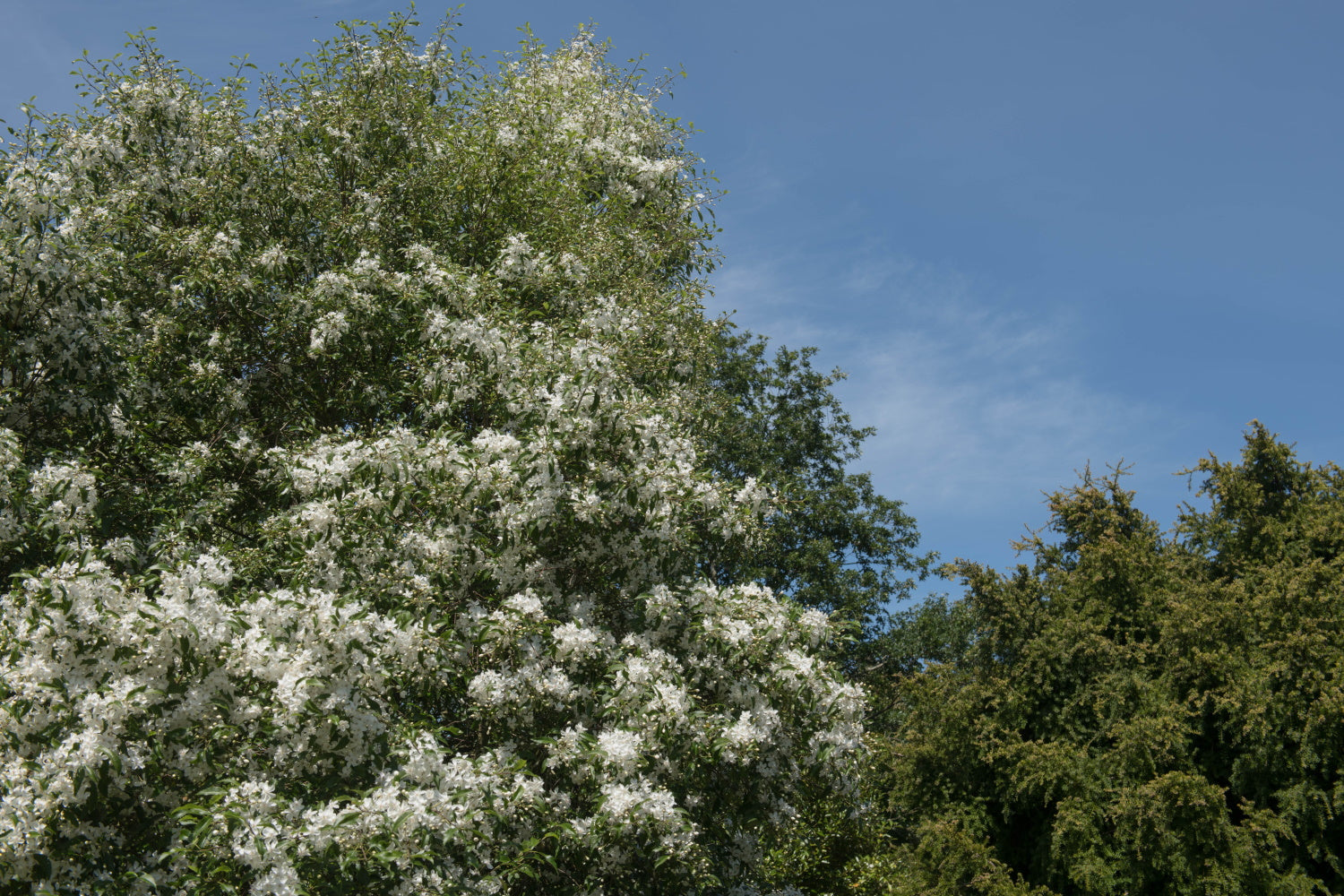230 products
230 products
Sort by:
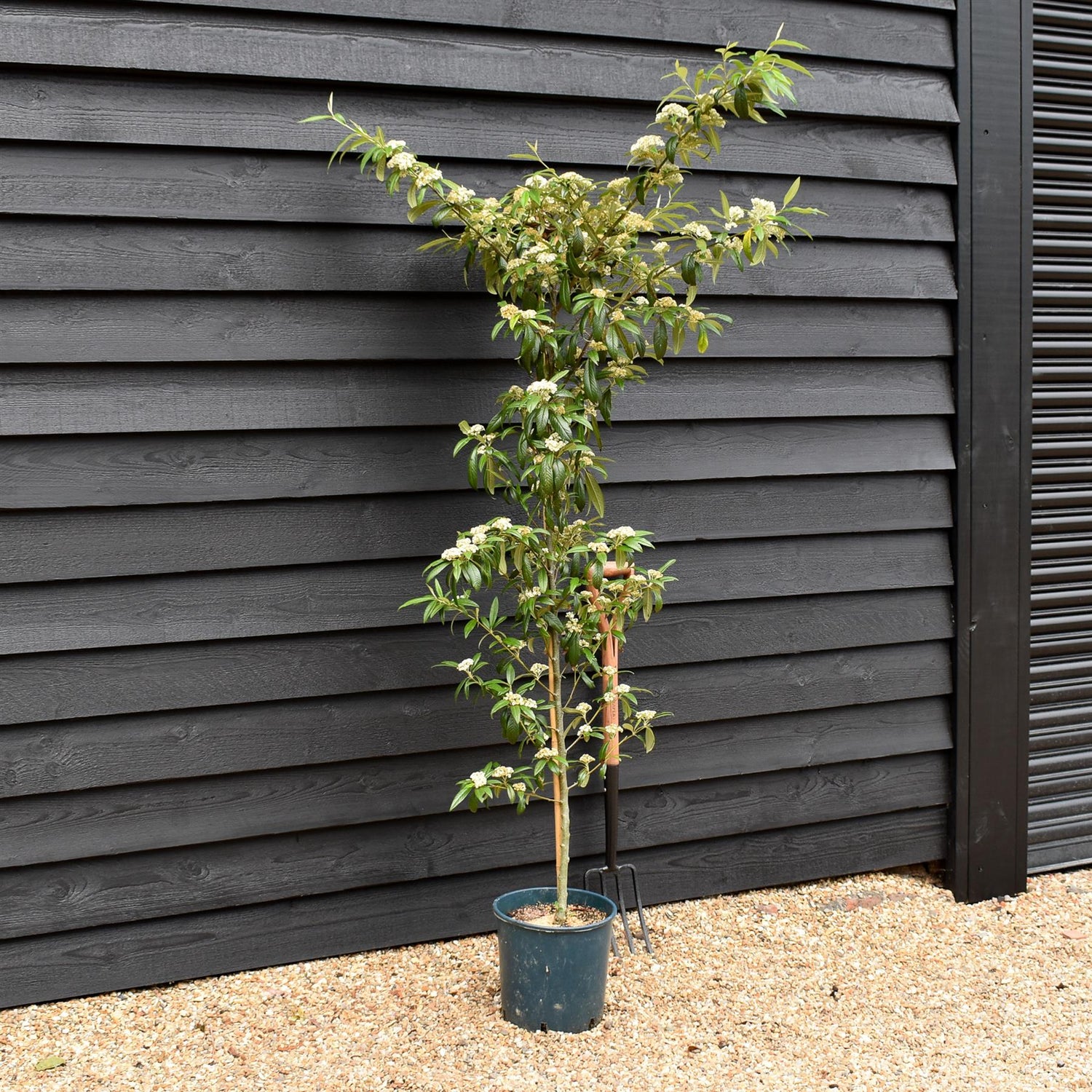
Cotoneaster 'Rothschildianus' | Willow-Leaved Cotoneaster - Height 160-180cm - 12lt
£82.00
Unit price perCotoneaster 'Rothschildianus' | Willow-Leaved Cotoneaster - Height 160-180cm - 12lt
£82.00
Unit price per
Alnus Cordata - Alder tree - Height 280-300cm - 30lt
£260.00
Unit price perAlnus Cordata - Alder tree - Height 280-300cm - 30lt
£260.00
Unit price perAlnus cordata, commonly known as the Italian alder, is a medium to large deciduous tree native to southern Italy and parts of Corsica. It belongs to the Betulaceae family and is highly valued for its ability to thrive in poor soils and challenging environmental conditions. This species is often planted for ornamental purposes, soil improvement, and as a windbreak due to its robust growth and adaptability.
The tree can reach heights of up to 25-30 metres (82-98 feet) with a trunk diameter of about 1 metre (3.3 feet). It has a relatively narrow, conical crown, which makes it an attractive choice for landscaping in urban and rural environments. The bark is smooth and greyish-brown when young, developing shallow fissures with age.
Alnus cordata is noted for its distinctive heart-shaped (cordate) leaves, which are bright green and glossy, measuring 7-12 cm in length. Unlike some other alders, the leaves of A. cordata remain on the tree until late autumn, giving it an extended season of greenery. In spring, it produces small, inconspicuous catkins, with male catkins being pendulous and yellowish, and female catkins more compact and upright. These develop into small, woody cones that persist on the tree through winter.
One of the key characteristics of Alnus cordata is its nitrogen-fixing ability. Like other alders, it forms a symbiotic relationship with the bacterium Frankia, which allows it to fix atmospheric nitrogen into the soil. This quality makes it an excellent species for improving soil fertility, particularly in degraded or nutrient-poor areas.
Overall, the Italian alder is a resilient and versatile tree, well-suited to a variety of landscapes, including wet or compacted soils, and is an important species for ecological restoration projects.
Alnus Cordata - Alder tree - Clear Stem - Standard - Girth 10-12cm - Height 400-420cm - 70lt
£390.00
Unit price perAlnus Cordata - Alder tree - Clear Stem - Standard - Girth 10-12cm - Height 400-420cm - 70lt
£390.00
Unit price perAlnus cordata, commonly known as the Italian alder, is a medium to large deciduous tree native to southern Italy and parts of Corsica. It belongs to the Betulaceae family and is highly valued for its ability to thrive in poor soils and challenging environmental conditions. This species is often planted for ornamental purposes, soil improvement, and as a windbreak due to its robust growth and adaptability.
The tree can reach heights of up to 25-30 metres (82-98 feet) with a trunk diameter of about 1 metre (3.3 feet). It has a relatively narrow, conical crown, which makes it an attractive choice for landscaping in urban and rural environments. The bark is smooth and greyish-brown when young, developing shallow fissures with age.
Alnus cordata is noted for its distinctive heart-shaped (cordate) leaves, which are bright green and glossy, measuring 7-12 cm in length. Unlike some other alders, the leaves of A. cordata remain on the tree until late autumn, giving it an extended season of greenery. In spring, it produces small, inconspicuous catkins, with male catkins being pendulous and yellowish, and female catkins more compact and upright. These develop into small, woody cones that persist on the tree through winter.
One of the key characteristics of Alnus cordata is its nitrogen-fixing ability. Like other alders, it forms a symbiotic relationship with the bacterium Frankia, which allows it to fix atmospheric nitrogen into the soil. This quality makes it an excellent species for improving soil fertility, particularly in degraded or nutrient-poor areas.
Overall, the Italian alder is a resilient and versatile tree, well-suited to a variety of landscapes, including wet or compacted soils, and is an important species for ecological restoration projects.
Celtis Australis | European hackberry - Girth 16cm - 470-480cm - 130lt
£920.00
Unit price perCeltis Australis | European hackberry - Girth 16cm - 470-480cm - 130lt
£920.00
Unit price perCeltis australis, commonly known as the European nettle tree, is a deciduous tree native to southern Europe, western Asia, and northern Africa. It belongs to the family Cannabaceae, and it is closely related to the hackberry tree.
The Celtis australis tree can grow up to 25 meters tall and has a dense, rounded crown with a spreading habit. The bark is smooth and gray-brown when young, becoming rough and fissured with age. The leaves are alternate, simple, and oval-shaped with serrated edges. They are dark green on the upper side and paler on the underside, turning yellow in autumn before falling.
The tree produces small, inconspicuous flowers in late spring or early summer, followed by small, round, edible fruit that resembles a cherry in size and shape. The fruit is initially green, turning yellow or brown when ripe, and is sweet and juicy, with a taste similar to a fig.
The Celtis australis tree is adaptable to a wide range of soils and can tolerate drought, air pollution, and salt spray. It is often used as an ornamental tree in gardens, parks, and urban landscapes due to its attractive foliage and distinctive bark. It also provides food and shelter for wildlife, including birds and small mammals. Additionally, the tree has cultural significance and has been used for centuries in traditional medicine for various ailments.
Ilex Nellie R Stevens | Holly 'Nellie R. Stevens' - Cone - 320cm - 130lt
£787.00
Unit price perIlex Nellie R Stevens | Holly 'Nellie R. Stevens' - Cone - 320cm - 130lt
£787.00
Unit price perIlex Crenata | Japanese Holly Bonsai Cloud Tree - Height 150-160cm Width 110cm, 33lt
£3,970.00
Unit price perIlex Crenata | Japanese Holly Bonsai Cloud Tree - Height 150-160cm Width 110cm, 33lt
£3,970.00
Unit price perHolly | Ilex 'Nellie R. Stevens' - Clear Stem 40cm - Height 80-100cm - 15lt
£88.00
Unit price perHolly | Ilex 'Nellie R. Stevens' - Clear Stem 40cm - Height 80-100cm - 15lt
£88.00
Unit price perYoung's weeping silver birch | Betula pendula Youngii - Stem 120cm - Height 170-180cm - 20lt
£198.00
Unit price perYoung's weeping silver birch | Betula pendula Youngii - Stem 120cm - Height 170-180cm - 20lt
£198.00
Unit price perIlex crenata| Japanese Holly - Bonsai - 25lt
£400.00
Unit price perIlex crenata| Japanese Holly - Bonsai - 25lt
£400.00
Unit price perIlex Nellie R Stevens | Holly 'Nellie R. Stevens' - Height 240-260cm - 90lt
£475.00
Unit price perIlex Nellie R Stevens | Holly 'Nellie R. Stevens' - Height 240-260cm - 90lt
£475.00
Unit price perCotoneaster 'Hybridus Pendulus' | Weeping Cotoneaster - 150-180cm, 10lt
£115.00
Unit price perCotoneaster 'Hybridus Pendulus' | Weeping Cotoneaster - 150-180cm, 10lt
£115.00
Unit price perCarpinus betulus Fastigiata Ball | Common Hornbeam - 450cm, 130lt
£695.00
Unit price perCarpinus betulus Fastigiata Ball | Common Hornbeam - 450cm, 130lt
£695.00
Unit price per
Ilex Nellie R Stevens - Holly 'Nellie R. Stevens' 'Fungo' - 300cm, 180lt
£880.00
Unit price perIlex Nellie R Stevens - Holly 'Nellie R. Stevens' 'Fungo' - 300cm, 180lt
£880.00
Unit price perIlex Nellie R Stevens | Holly 'Nellie R. Stevens' - Cone - 320cm, 130lt
£787.00
Unit price perIlex Nellie R Stevens | Holly 'Nellie R. Stevens' - Cone - 320cm, 130lt
£787.00
Unit price perAlnus Incana - Grey Alder tree - Clear Stem - Standard - Girth 12-14cm - Height 380-400cm - 70lt
£390.00
Unit price perAlnus Incana - Grey Alder tree - Clear Stem - Standard - Girth 12-14cm - Height 380-400cm - 70lt
£390.00
Unit price perAlnus incana, commonly known as grey alder, is a deciduous tree belonging to the birch family, Betulaceae. Native to Europe, Asia, and North America, it is a resilient species often found in riparian zones, wetlands, and areas with moist soils. This medium-sized tree typically grows to heights of 15 to 25 metres, with a slender trunk and smooth, greyish-brown bark, which often develops fine fissures with age.
The leaves of Alnus incana are oval to elliptic in shape, measuring 5 to 10 centimetres in length. They are characterised by their serrated margins and a dark green upper surface, with a paler, slightly downy underside, giving them a distinct two-tone appearance. The leaves emerge in early spring and typically turn yellow before falling in autumn.
Grey alder is monoecious, meaning that both male and female reproductive structures are found on the same tree. The male catkins, which are long and pendulous, appear in early spring before the leaves, while the smaller, more upright female catkins develop into woody cones that persist on the tree through the winter. These cones release small winged seeds, which are dispersed by wind and water.
One of the notable features of Alnus incana is its ability to fix nitrogen through a symbiotic relationship with the bacterium *Frankia*. This allows it to thrive in nutrient-poor soils and contribute to soil fertility, making it a valuable species for land restoration and erosion control.
Grey alder is often planted in landscaping and reforestation projects, particularly in areas prone to flooding or soil degradation. Its rapid growth, hardiness, and ecological benefits make it an important species in maintaining the health of wetland ecosystems.
Ilex 'Nellie R. Stevens' | Holly 'Nellie R. Stevens' - Multistem - 100-120cm - 90lt
£290.00
Unit price perIlex 'Nellie R. Stevens' | Holly 'Nellie R. Stevens' - Multistem - 100-120cm - 90lt
£290.00
Unit price perAlnus Glutinosa Imperialis - Alder Imperialis - Height 220-260cm - 12lt
£94.00
Unit price perAlnus Glutinosa Imperialis - Alder Imperialis - Height 220-260cm - 12lt
£94.00
Unit price perAlnus glutinosa 'Imperialis,' commonly known as the Imperial Alder, is a cultivar of the European alder (Alnus glutinosa) renowned for its striking ornamental qualities. This deciduous tree is a favoUrite among landscape enthusiasts and horticulturists for its impressive appearance and adaptability.
Imperial Alder typically reaches a height of 40 to 50 feet (12 to 15 meters) and forms a broadly pyramidal shape. Its dark green, glossy leaves are deeply cut and serrated, measuring about 4 to 6 inches (10 to 15 cm) in length. During the growing season, the foliage provides a lush and vibrant backdrop to garden landscapes.
One of the standout features of Alnus glutinosa 'Imperialis' is its stunning catkins. In late winter or early spring, long, pendulous catkins emerge, adding a unique and captivating element to the tree's appearance. These catkins sway gracefully in the wind, creating a charming visual effect. Additionally, this cultivar displays a lovely yellow fall coloUr, which adds to its overall aesthetic appeal.
Imperial Alder is highly adaptable to various soil types and moisture conditions, making it suitable for a wide range of environments. It thrives in full sun to partial shade, making it a versatile choice for gardens and parks. Its ability to tolerate wet soil and even occasional flooding makes it an excellent choice for riparian zones or areas prone to seasonal waterlogging.
Beyond its aesthetic value, Alnus glutinosa 'Imperialis' also contributes to the ecosystem by supporting various wildlife species. Its catkins provide a source of food for birds and insects, and its roots help stabilize soil along riverbanks and wetland areas.
In summary, Alnus glutinosa 'Imperialis' is a captivating cultivar of the European alder celebrated for its striking appearance, adaptability, and ecological contributions. Whether used as a focal point in a garden or to enhance riparian habitats, this tree adds a touch of elegance and functionality to its surroundings.
Ilex 'Nellie R. Stevens' Standard | Holly 'Nellie R. Stevens' - Girth 12-14cm - 300-340cm, 70lt
£630.00
Unit price perIlex 'Nellie R. Stevens' Standard | Holly 'Nellie R. Stevens' - Girth 12-14cm - 300-340cm, 70lt
£630.00
Unit price perShowing 180/230


